Category: North India
Discover India through the lens of Indus Discoveries. #IndusIndia

India, a land of heritage, diversity, rich history and vibrant culture, has always mesmerized travelers from around the globe with its myriad of experiences. From the snow-capped peaks of the Himalayas to the serene backwaters of Kerala, each corner of this vast country offers something unique to explore.
And what better way to unravel the mysteries of India than through the lens of Indus Discoveries, a Destination Management Company specializing in crafting bespoke travel experiences. We invite you on a journey of a lifetime to discover the enchanting, vivid tapestry of India.
Culture, Heritage & History Holidays
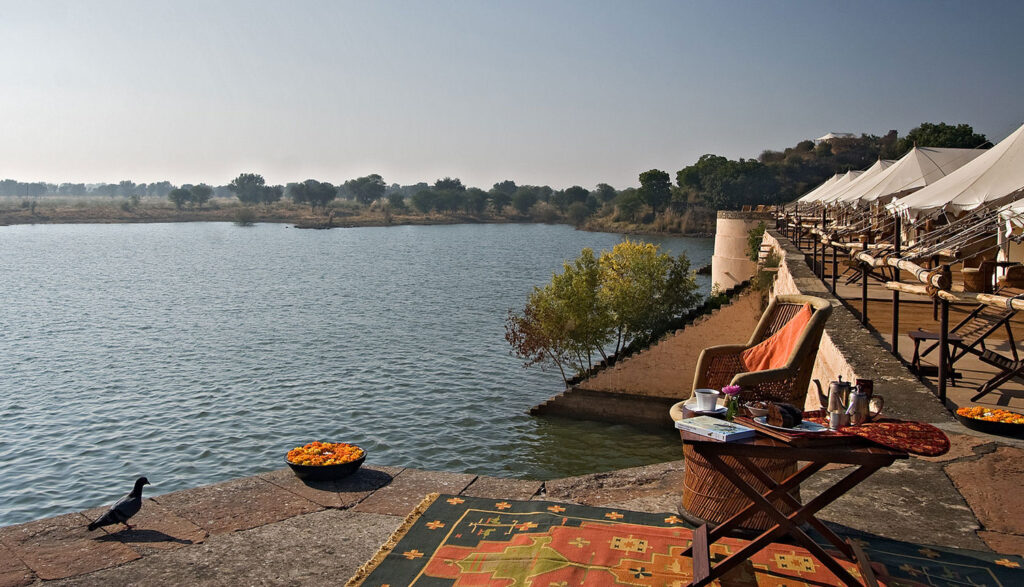
India’s essence lies in its rich diversity of traditions, religions, cuisines, languages, and landscapes. As the oldest civilization, it offers awe-inspiring landscapes and vibrant cultures, making it an ideal destination for cultural holidays. Explore India’s warm people, majestic mountains, lush forests, and grand festivals. Experience Gujarat’s vivid colors, Rajasthan’s timeless beauty, Varanasi’s spiritual aura, Darjeeling’s scenic wonders, Kerala’s ethereal beauty, and more.
Culinary Experiences
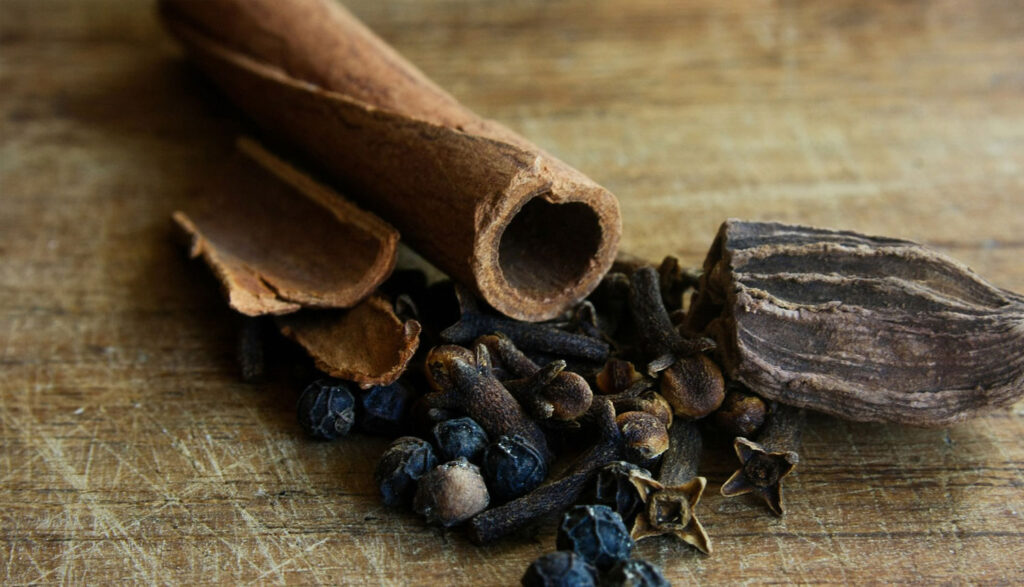
Explore India’s diverse cuisines and captivating tales on our culinary journeys.
Join our Cooking in Paradise tour to uncover North Indian delights, including Awadhi cuisine in Lucknow, Mughlai treats in Agra, and authentic Rajasthani fare in a village setting. Cap off the experience with a dinner hosted by Lucknow’s royal family. For a taste of Southern India, embark on our Coffee and Cuisine tour through the Malabar and Coorg regions. Learn Mapillah cuisine secrets in north Kerala and roam spice plantations in Wayanad and coffee estates in Coorg.
Holidays By Rail

Embark on a journey through the vibrant Indian landscape aboard splendid locomotives. Each train ride offers a unique cultural experience, from the fast-paced journeys of the Shatabdi and Rajdhani Express to the nostalgic charm of steam trains in Nilgiris, Darjeeling and Shimla. Indulge in luxury aboard award-winning trains like the Palace on Wheels, Maharaja’s Express, and Deccan Odyssey, where modern comforts meet traditional elegance for an unforgettable travel experience.
River Cruises

Embark on a sublime journey along India’s lifeline rivers, offering a unique perspective of the country’s hidden treasures.
Enjoy elephant and jeep safaris, spotting rare one-horned rhinos at Kaziranga National Park. Visit the Ahom kingdom ruins, the Mishing village, and the Neo-Vaishnavite monasteries of Majuli Island.
Cruise down the Hugli River from Calcutta to the Ganges, explore the brassworking village of Matiari, the terracotta temples of Kalna, and the remnants of the Dutch settlement in Chinsurah.
Journeys for the Soul
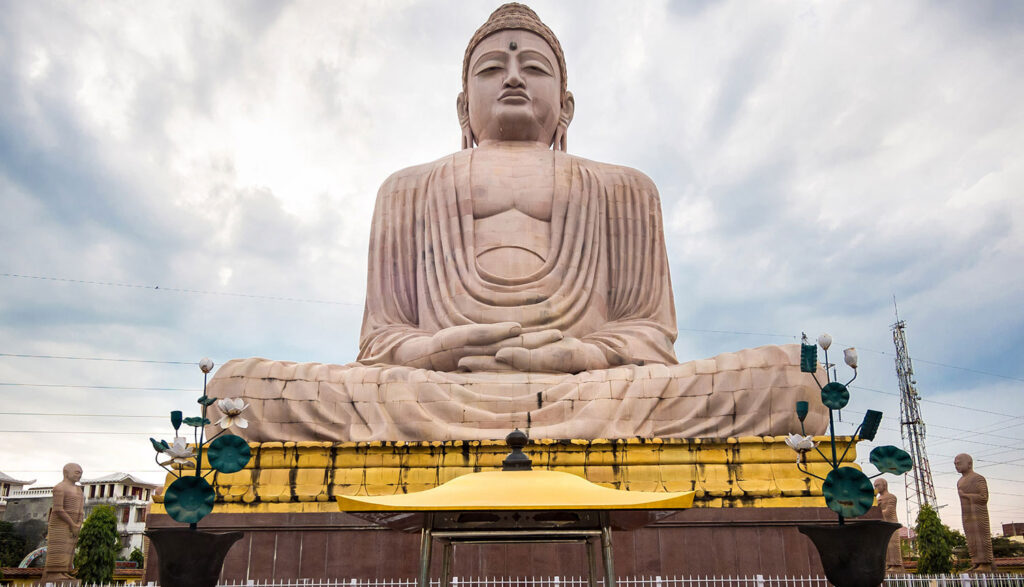
India’s diverse religions unite its people, from the temple bells of Varanasi to the mosque gatherings in Ajmer, and the Christmas carols in Goa to the Sikh service in Punjab. It’s the land of Buddha’s enlightenment, the birth of Yoga, and thriving Ayurveda. For 16 years, Indus Discoveries has tailored religious pilgrimages, spiritual journeys, and yoga tours. Our network of experts crafts specialized itineraries for religious institutions, educational groups, and individuals seeking to immerse themselves in India’s rich religious heritage.
Wildlife Safaris
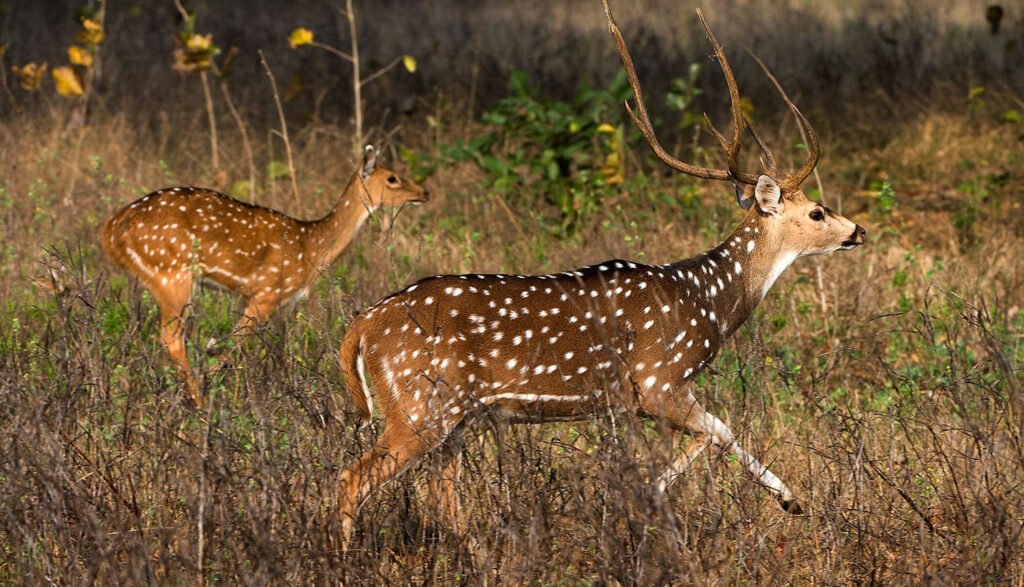
India’s diverse landscapes host an array of national parks, each offering a unique wildlife experience. With over 80 national parks and 440 wildlife sanctuaries, covering nearly 4.5% of the country’s area, India boasts an impressive variety of indigenous species, including the Asiatic Lion, Elephant, Snow Leopard, Royal Bengal Tiger, and Siberian Crane. Notably, India is the sole country where both lions and tigers roam freely.
So, why wait? Embark on a magical journey with Indus Discoveries and let the magic of India unfold before your eyes. Let’s start planning your unforgettable adventure together!
Heritage Trails Srinagar, Kashmir
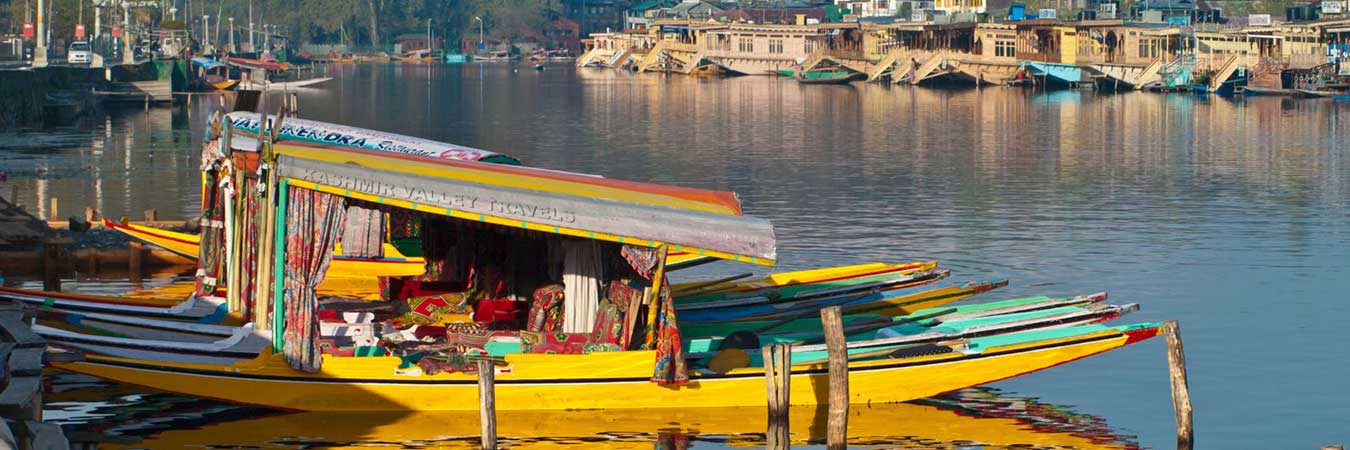
Visitors to Srinagar, in India’s Kashmir Valley, are often surprised to discover how broad the city’s heritage really is. Houseboats on Dal Lake, Mughal gardens and tulips are among the first things that come to mind. Yet, this belies the fact that Kashmir was ruled over thousands of years by kings of varied ethnicities and religions — Hindu, Buddhist, Muslim, Mughal, Afghan, Sikh, and Dogra — creating a very rich heritage that has evolved over time.
Let’s take a look.
Most remarkably, Srinagar’s origin can be traced as far back as the 3rd century BC, when Mauryan emperor Ashoka is said to have founded the city a short distance north of where it’s located today. He introduced Buddhism into the Kashmir Valley and it flourished there alongside Hinduism. Hindu rule predominated until the 14th century though, when the Muslim Sultanate was established and took over in Kashmir.
Islam and Sufi culture made its way to Kashmir from Central Asia through the ancient Silk Road trading route, with the mystical mountains holding special appeal to Sufi saints. Many prominent Sufis from Central Asia fled persecution by Mongol invaders and sought refuge in Kashmir during the Sultanate period. The Sufi-Islamic way of life complemented the Rishi tradition of Kashmiri Hindus, and it developed into a unique form of Kashmiri Sufism that incorporated local religious philosophies. Kashmir prospered under the Sultanate’s fair and strong administration too.
Mughal emperor Akbar conquered the region in the late 16th century, ending the Sultanate’s reign. Subsequent Mughal rule, which lasted almost 200 years, brought about profound changes to Kashmir’s culture, society and landscape. In the mid 19th century, the British gained control of Srinagar. The city was one of their favourite summer retreats and they commissioned the iconic houseboats as accommodations.
The different eras of rulers who made the Kashmir Valley part of their empires have contributed much to the distinctive architectural legacy and heritage in Srinagar. Evocative monuments, buildings, places of worship, and traditional arts and crafts reflect the life and times of the city’s inhabitants. We’ve curated six themed heritage trails to take you on a journey through each era and bring the magnificence of Srinagar’s past to life. The duration of each trail ranges from an hour and a half to three hours.
1. Medieval Heritage Trail

This walk goes through the atmospheric old downtown district of Shahar-i-Khaas bordering the Jhelum River. It starts on the left bank of the river at Pathar Masjid, a stately grey limestone Mughal-era mosque from the 17th century. Across Zaina Kadal Bridge, the Khanqah of Shah Hamadan is a prominent Sufi prayer hall that’s a masterpiece of woodwork carvings and intricate artwork. Follow the trail’s winding lanes past nostalgic vernacular style houses, and spice and dried fruit markets, to the 15th century Mazar-i-Salateen royal cemetery complex. The trail finishes at 14th century Jamia Masjid, Srinagar’s oldest and largest mosque.
2. Mughal Heritage Trail

On this walk, you’ll explore the walled city of Srinagar constructed by Emperor Akbar to the west of Dal Lake, below Hari Prabhat hill, in the 16th century. The trail commences at what’s believed to have been the main entrance gate, Kathi Darwaza. Inside the gate, there are a couple of mosque complexes to see before heading up to the 18th century Afghan fort complex on top of Hari Prabhat. The climb is worth it to be rewarded with a captivating vista of the lake and city below. The final destination on the trail is Badam Wari almond orchard, where you can relax amid the trees and admire Nigeen Lake. It’s spectacular in during full bloom in spring.
3. Jhelum Riverfront Heritage Trail
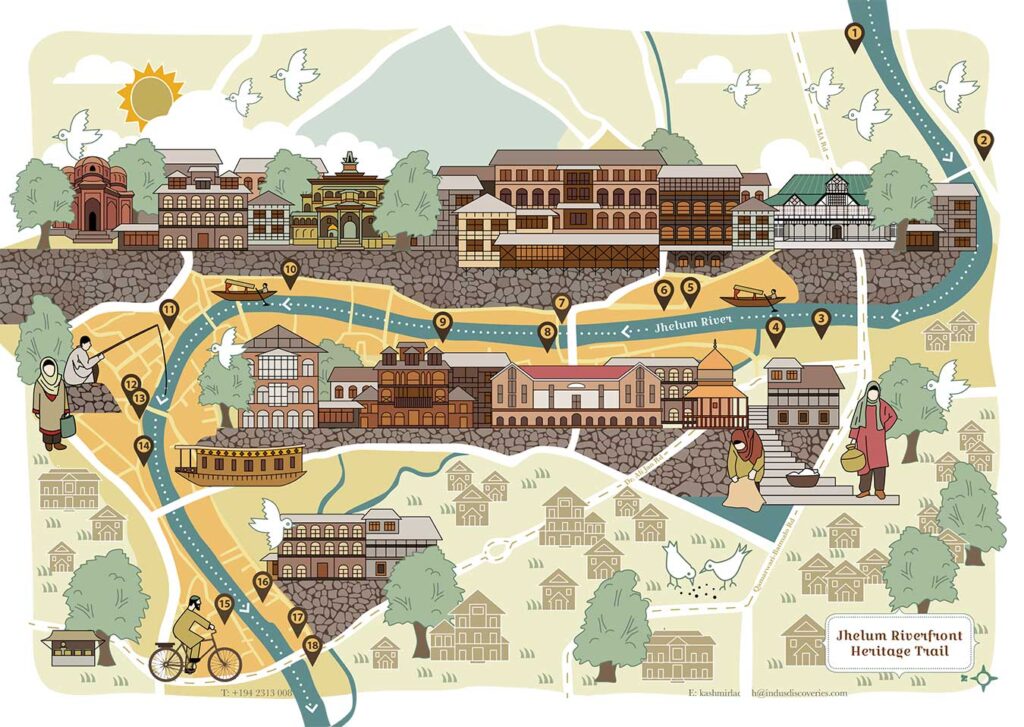
Development along the Jhelum River, which winds its way through the city, took place from the 14th century onwards. A boat ride along the river will give you an unforgettable perspective of the historic buildings, temples, mosques, palaces, and bridges that line the riverfront. Many have great cultural and architectural significance. The trail starts at Zero Bridge and ends at Safa Kadal.
4. Sufi Heritage Trail
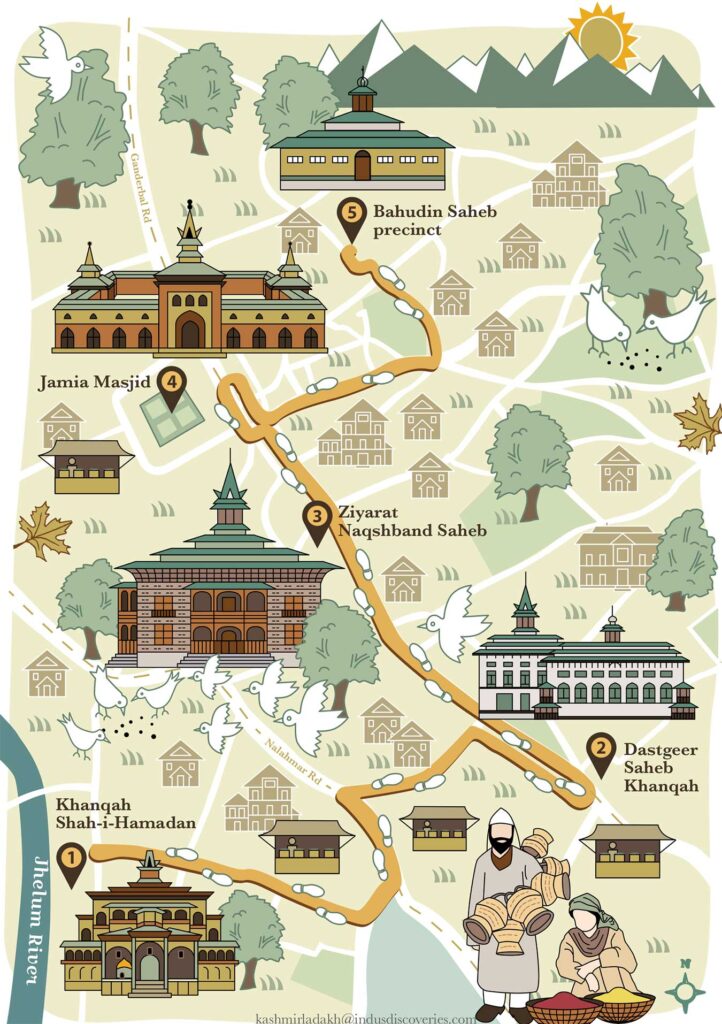
This trail also goes through Srinagar’s Shahar-i-Khaas district but focuses specifically on places of worship associated with notable Sufi saints. It begins at Khanqah of Shah Hamadan, dedicated Mir Syed Ali Hamdani who came from Iran in the 14th century and imparted the Sufi faith in Kashmir. Next is the ornate 200 year-old Khanqahof Dastgeer Saheb, of the Qadri orderof Sufi mysticism, which is frequented by both Hindus and Muslims. Nearby, Ziyarat Naqshband Saheb is named after a popular Sufi saint from Bukhara in Uzbekistan who founded the Naqshbandi Sufi order. The trail concludes to the north of Jamia Masjid at the precinct of Bahaudin Saheb.
5. Colonial Heritage Trail
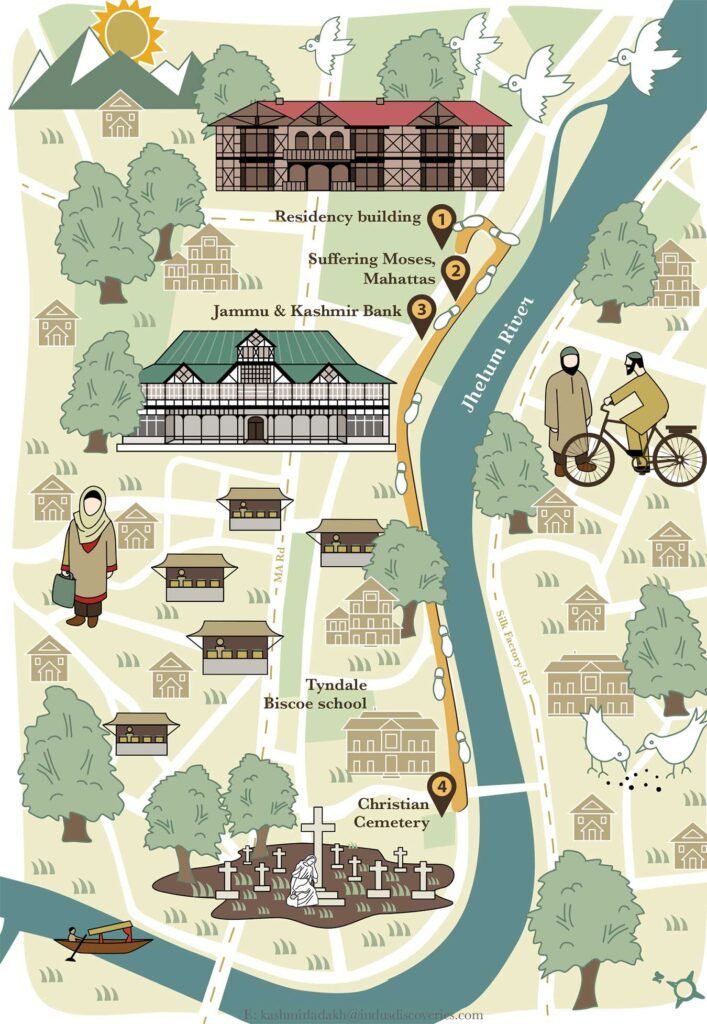
This British era influence can best be seen in the vicinity of what remains of Srinagar’s once fashionable shopping strip, The Bund. Of outstanding splendor is the British Residence Building, which now houses the state handicraft showroom. The walk commences there and extends along The Bund to the poignant Christian Cemetery.
6. Textiles, Arts & Crafts Heritage Trail
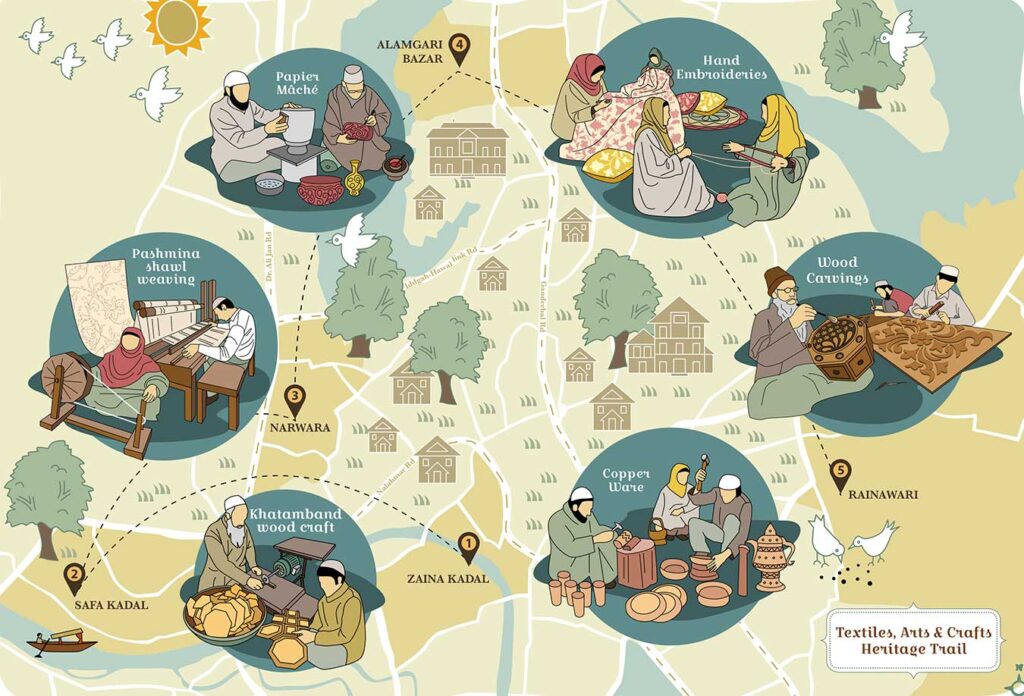
A visit to Srinagar wouldn’t be complete without appreciating the wonderful skills of the city’s artisans, including several age-old crafts that were brought to Kashmir from Persia. This trail covers workshops specialising in copperware, Khatamband woodwork, pashmina shawl weaving, papier-mâché, Kashida embroidery, and walnut wood carving.
As you can tell, Srinagar is a fascinating city indeed. Interested in learning more about these heritage trails? We welcome you to download our free brochure with maps.
Kashmir- The Land Of Sufis
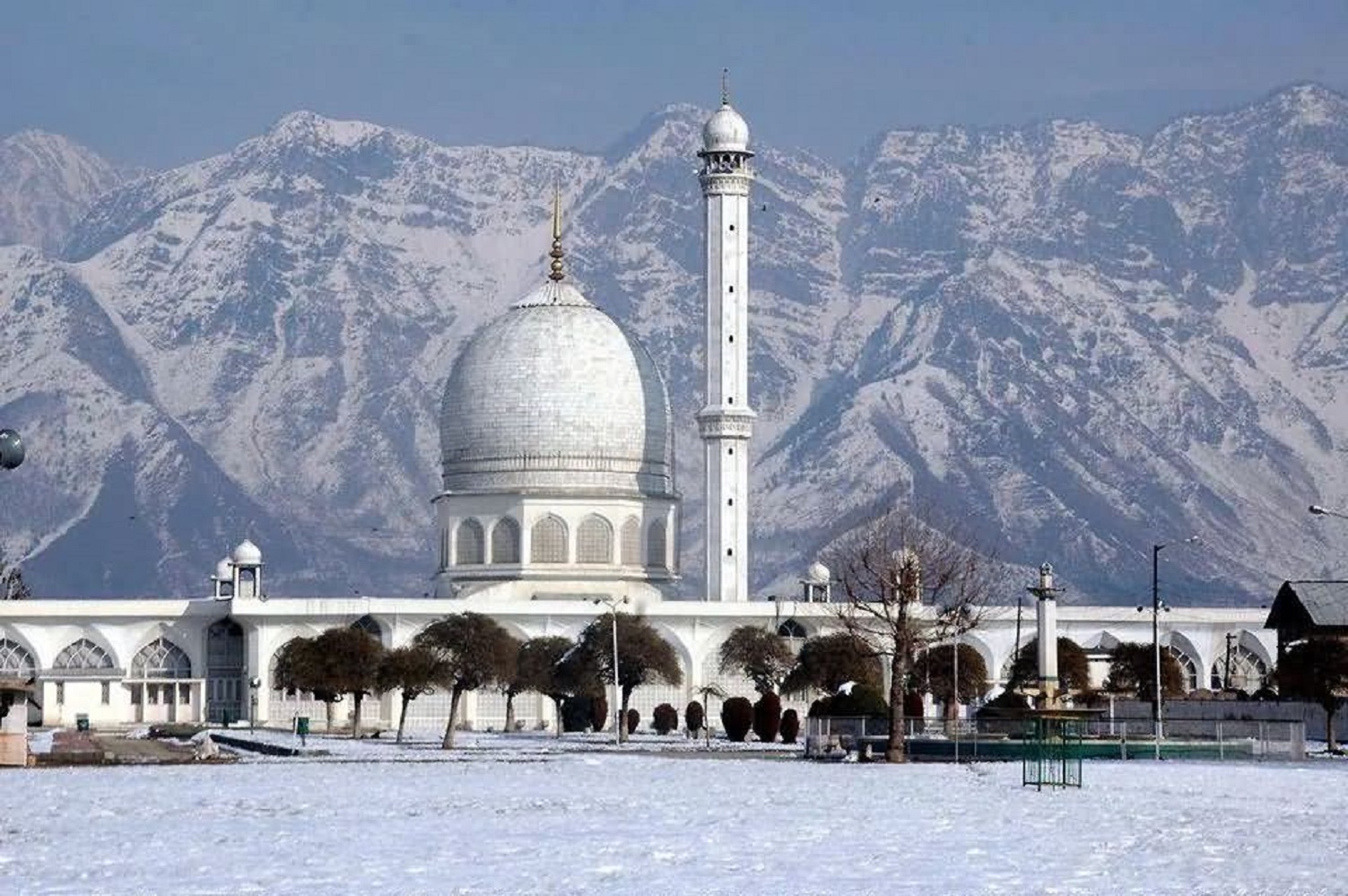
The spread of Islam in Kashmir by the Sufi saints has always been discussed by various scholars, academics, writers, historians and believers. The impact of Sufism on the culture of the beautiful place has been alluring and has always enhanced the beauty of Kashmir. Beyond the known Kashmir, the mountain ranges, the green meadows, and the water bodies, there is a different world. A world which is yet to be explored by the visitors.
In the midst of these astonishing scenes are the cabochon Sufi shrines. From ages there are these architectural beauties that are not only providing gratification to the believers but are quenching the thirst of the people who admire the art and the architecture. Verily the beauty of Kashmir is not only in its natural resources but also in these architectural buildings that are full of faith.
From the stairs of the Sheikh Hamza Makhdoomi RA to the gardens of the Hazratbal Shrine, from the astonishing architecture of the Sheikh Abdul Qadir Jeelani popularly known as Dastegeer Sahib to the historically beautified shrine of Mir Syed Ali Hamdani aka Khanqah-e-Maula, every step taken will reach straight to the land of bliss.
Let’s walk through the aisle and understand the new Kashmir and its age old beauties.

The Dargah Hazratbal Shrine which lies on the left bank of Dal Lake is the most peaceful and holy place of Jammu and Kashmir. The temple houses an important relic Moi-e-Muqaddas sacred hair of Prophet Muhammad (PBUH). It took approximately 11 years to complete the Mosque and it is the only domed Mosque in Srinagar. It offers a dazzling vista of lake and mountains.
Makhdoom Sahib Shrine
Makdoom Sahib at Srinagar is located at the foothills of Hari Parbat. The shrine rests below a magnificent Mughal Fort that’s spread out on the hill. This fort gives a magnificent top view of Makhdoom Sahib Shrine and falls on the southern side of the hill. The beauty of this shrine is truly enchanting and devotees from all religions flock here. The shrine is named after Sheikh Hamza Makhdoomi, who hailed from the Tujar Shareef which lies in Kashmir. He was from the Syed dynasty and was a scholar and a mystic Sufi saint. There is a Kashmiri saying “Mehanatas cha Mazooer” which translates to “Hard work Pays Off” and this shrine is the perfect example of the hard work that people do at this shrine. There are approximately 80 stairs that devotees take to reach the shrine and get their desires fulfilled.

Dastageer Sahib Shrine
Dastageer Sahib is a 200-year-old shrine situated in the old city area known as Khanyar. This shrine is named after the Sufi Saint of Baghdad namely Shaykh Abdul Qadir Jeelani. Although, Sheikh Abdul Qadir Jeelani never visited Srinagar but this shrine was built in his honor. The beauty of the shrine is that there is a holy relic of the saint that has been preserved for ages. It is said that the holy relic belonging to the Sufi saint was first brought to Srinagar by an afghan traveler. It was then handed over to Syed Buzarg Shah, an eminent Sufi saint of Qadri order. Yet in another story it is said that the holy relic was brought from Thatha Sindh by Hazrat Sakhi Shah Muhammad Fazil who was a descendent of the Geelani Clan. In addition to the holy relic, the shrine houses an old Quran hand written by Hazrat Abu bakr Siddique RA and Hazrat Ali RA. All these are kept in a fireproof vault and are taken out on special occasions. People from all the corners visit this place irrespective of their religion. Other than that, this shrine has a great architectural value. It is made entirely of wood and not a single nail has been used. In 2012, this 200 year old shrine was gutted in a fire but the people and the government jointly worked on the project and restored the shrine to its original glory.

Baba Reshi Shrine
Babareshi is the name of a village and forest area in Jammu and Kashmir. It is named after the Sufi saint Baba Payamuddin Reshi. The Ziyarat Baba Reshi shrine is a three-storey monument and is situated at an altitude of about 7,000 feet (2,133 meters). It is located near the Ramboh village in Baramulla District and was built in 1480, in Mughal and Persian styles. There is accommodation for tourists and pilgrims around the shrine. Each building has a Daan or cooking place where the Kashmiris prepare their meals and everyone traditionally contributes some of it to the Langar (collection place). The Langar staff distributes the food in charity.

Charer-e-Sharief
Sheikh-ul-Alam Hazrat Noor-ud-Din Wali RA is one of the most renowned poets in the history of Kashmir. The shrine situated at charer-e-sharief in the district of Budgam in Kashmir provides an enchanting view to the visitors. The bright architecture with wood carvings along with the paper machie decorative is one of the most beautiful things to see. The Sufi saint was a great poet despite not being literate and his poetry is still alive and is used from time to time.
Manganiyars – The Virtuoso Musicians of Rajasthan
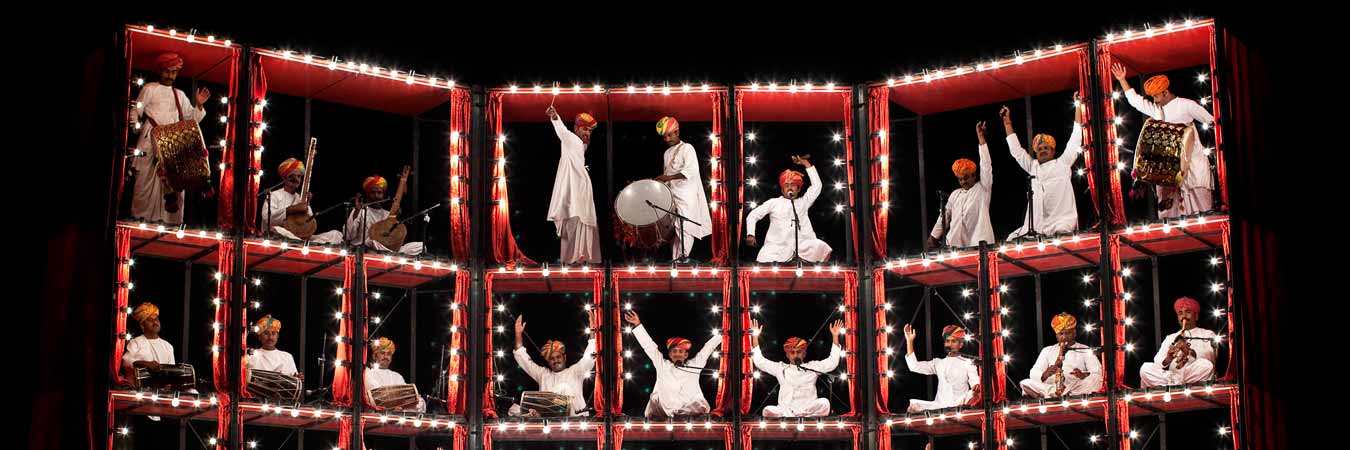
Famous for their classical folk music, the Manganiyars find a special mention and inordinate respect in the folk music circuit of India. Manganiyar is a hereditary community living in the obscure villages between India and Pakistan. In the Sindh province of Pakistan and in India’s Western Rajasthan, the Manganiars have been musical performers for generations and genealogists for higher caste patrons. These skilled folk musicians of the Thar pass on their songs from generation to generation in a form of oral history of the desert.

Manganiyars are Muslim by religion but they present a true example of communal bonhomie in India. Their universe of songs also has praising verses for Hindu deities and traditionally they pray to the Hindu god Krishna and seek his blessing before starting their performance. During the time of the Maharajas, the Manganiyars were the musicians of the Rajput courts; they used to accompany chiefs to war and provided them with music before and after the battle. On the event of their patron’s death, they would sing day and night until the mourning was over.

Today the Manganiyars continue to conserve their extraordinary art of oral renditions of folklore. They perform on various occasions at the house of the rich. Their music is an indispensable part of weddings, engagements, and births, and has hundreds of songs for each occasion. Describing the patron’s or Jajmaan’s illustrious history mixed with the lyrics of pride and honour is their specialty. Now the performances of Managaniyars have reached some of the world’s biggest stages and their performances are highly appreciated not only due to their unique vocals and instruments but also because of their ability to move audiences from immense joy to tears of happiness.
Musical Instruments used by the Manganiyars
Just like their unique vocals, the Manganiyars also use some special musical instruments that are the most difficult Indian instruments to master. The Khamaycha, Harmonium, Dholak, Khartal, Morchang or 40 strings Sarangi are a few instruments used by the Manganiyar artist.

Kamaicha: It is the most significant instrument of the Manganiyar community. It is their version of Mandolin and is only played by them. Made of mango wood, it has 17 strings: three special strings made of goat intestine for the melody and fourteen of steel for melodious resonance. It is played with a specially designed bow made of horse hair and when it touches the three strings made for the melody it produces a soul-stirring sound.
Harmonium: Similar to the pipe organ or reed organ, the harmonium is a free-standing keyboard instrument where sound is produced by air supplied by the hand-operated bellows.
Dholak: Dholak is a common instrument used in Hindustani (Indian) Classical Music. It is a twin faced drum for perfect rhythms.

Khartal: With special movements of the hands Khartal produces melodious sounds. It is made of Sheesham wood. When played, it evokes a delightful combination of rhythm and the musical notes.
Morchang: The Morchang is made of a metal ring with two parallel forks forming the frame, a fixed metal tongue between the forks, fixed at one end and free to vibrate at the other. The tongue is bent at the free end perpendicularly to the circular ring so that it can be struck and made to vibrate.
Famous Manganiyar Artists:
Sakar Khan Manganiyar: Born in 1938 in Hamira, Rajasthan, he was considered as one of the greatest players of Kamaicha. In the year 2013, the Government of India honoured Sakar Khan with the fourth highest civilian award of Padma Shri. Internationally, his concerts have taken place in countries like USA, France, Japan, Belgium and erstwhile USSR. This legendary artist has also collaborated with well known musicians like George Harrison from the Beatles.
Mame Khan: Born in a village of Satto near Jaisalmer, Mame Khan is a modern day sensation from the Manganiyar community. His voice finds a special place in the folk music of Rajasthan. The songs of Sufi saints of Sindh and Rajasthan including Kabir, Bulleh Shah, and Baba Ghulam Farid are sung by Mame Khan with energy and joy. He has not only performed across India but also around the world including Europe, Africa, America and the Middle East. He is the man behind the main vocals of the famed Manganiyar Seduction by Roysten Abel. Recently he has also won the GIMA’s (Global Indian Music Academy) Best Folk Single Award for the song called “Sawaan” for his debut album Desert Sessions.
The trance of the Manganiyars awaits your arrival in their desert land. If you wish to travel to the land of the Manganiyars, you just need to Contact Us and we will craft a tailor-made tour that will echo the tones of this gifted artisan community.
How Safe Is Traveling In Kashmir to Tourists – The Actual Reality
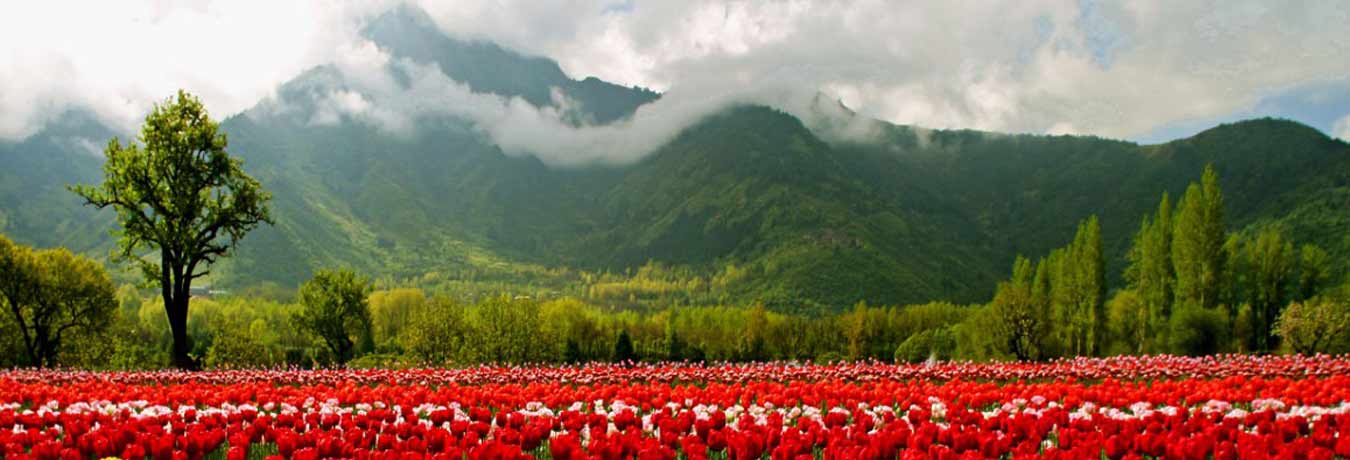
There might be few doubts and repercussions in your mind, when it comes to traveling in Kashmir as it is prone to civil unrest and violence. Well, all we have got to say is Kashmir knows how to treat their guests. Alike all of India – Kashmir also believes in “Atithi Devo Bhava” Or every tourist is God incarnated.
@IndusDiscovery It is the media that wants to portray that. Kashmir is heaven, everywhere.@AboutIndia@Hippie_InHeels@lakshmisharath
— Shubham Mansingka (@travelshoebum) May 30, 2016
Popularly acknowledged as “Switzerland of India” and “heavens on earth”, Kashmir is a destination that will never fail to attract tourists. The mind boggling views of exquisite gardens and snow clad mountains can make this state probably the most sought after tourist place in India. But unfortunately a place which was once a top visited destination by foreigners now attracts very few travelers from abroad.
Many people from different parts of this globe have shown interest in traveling to Kashmir during their India Vacation. Post 2010, the tourism industry in Kashmir has boomed among the globe trotters but according to the Union Tourism Ministry, J&K has received only 1% of the 80,00,000 tourist arrivals in India 2015.

For us traveling in Kashmir is all about floating houseboats, complete panoramic views, lush greenery and views that you just cannot take your eyes off from. Apart from that, the craggy terrains, inclined meadows, arrogant hills and astounding mountains offer a range of adventure activities like rock climbing, trekking, skiing, camping, Paragliding and snowboarding that people can enjoy while traveling in Kashmir.
As travel and tourism is a thriving affair in Kashmir, there are numerous tourism guides available for reference. Besides, tourists can also opt for tailor made tours offered by different local tour operators in planning the best out of traveling in Kashmir. Considering the importance of this beautiful state, The Lonely Planet Magazine India Travel Awards 2016 has awarded this state as the most romantic state in India. Some of the popular tourist destinations of this site include: Pahalgam, Srinagar and Gulmarg
How safe is traveling in Kashmir – Several Informative Details
People often consider safety as an important issue while it comes to traveling in Kashmir. A special police force, called the “Tourist Police” is posted at all important tourist points in Kashmir. The force is headed by the Superintendent of Police himself in order to ensure prevention of any kind of harassment to tourists. The Indian Government has also enacted a special law called the “J&K Registration of Tourist Trade Act”.
Under this act, “some officers of the Tourism Department have been vested with magisterial powers, including the power of compounding, in case of cheating, overcharging, harassment, pestering, toting, etc. faced by tourists. Tourists are urged to contact the nearest tourism officer or the Deputy Director Tourism (Enforcement), with complaints, if any, or for solving problems faced by them.” – [http://www.jkpolice.gov.in/public-advisories/safety-tips-for-tourists.htm]

With residents, who are very friendly, warm, polite and respectful the state just lives on to be a traveler’s paradise. And there’s more! Another exciting fact about the valley is; Kashmiri’s happen to be really good hosts. Whether it is the tourist guide or the local crowd, everyone is really nice.
Even Sharell Cook, India Expert of About.com (travel) feels the same. Check what she has to say about her Kashmir visit .
@IndusDiscovery @Hippie_InHeels @travelshoebum @lakshmisharath I didn’t feel that it was unsafe when I visited a couple of years ago.
— Sharell Cook (@AboutIndia) May 30, 2016
Note: It is highly recommended to stay in constant touch with a your local tour operator and to discuss briefly about the itinerary and route map before your arrival. Do not travel by road from Delhi or any other actual place of your arrival in India and only travel by air to Sri Nagar.
Information On The Popular Tourist Destinations In Kashmir
The magnificence of this amazing state, lying in the bosom of the Himalayas is reflected in its beautiful cities of,

Srinagar: Featuring the beautiful Dal Lake and the snow clad Himalayan range, Srinagar is truly the summer capital of India and offers a range of wonderful tourist destinations to travelers. This city also attracts a large number of tourists from India and abroad. This also happens to be one of the places that will make you feel safe with its warmth. Capacitated with lakes, Mughal Gardens, handicrafts and houseboats, Srinagar always ready to “wow” you whenever you set foot in its precinct. The beautiful lakes of this city nestled in the peaks of Pir Panjal ranges are famous for leisure rides in houseboats and shikaras.
Apart from the above mentioned places, there are some other tourist attractions in this state like as the Nishat Bagh, Chashme Shahi Bagh, the Tulip Garden, Shankaracharya Temple and Hazratbal Dargah.

Gulmarg: Located around 70 kms away from Srinagar, Gulmarg is a tourist destination known for its scenic beauty and enchanting tourist attractions. Located 8825 feet above from the sea level, this destination offers complete panoramic views of the snow capped Mountain Apharwat peaks and an amazing scenic beauty of the surrounded valleys. Famous all around for adventurous activities and natural beauty, Gulmarg works as the ideal summer retreat for tourists both in and outside of this country. There are a number of activities that tourist can do to enjoy their stay while traveling in Kashmir. One of these is to take the cable car to experience the mesmerizing scenery created by nature or frolicking in the snow. Though the Pakistan border is just a 30 minutes hike from this place, but still Gulmarg happens to be one of the safest places known in Kashmir. Gulmarg is also considered as one of the highest skiing resorts in India with the availability of hilly slopes ranging between 8,700 and 10,500 feet.

Sonamarg: Sonamarg is yet another marvel situated in the heart of a valley carved by the Sind River. Also known as the Meadow of Gold, this destination includes a breathtaking drive on the mesmerizing Srinagar-Ladakh highway. In this place, the nature is just at its poetic best and encourages tourists to trek to the Thajiwas Glacier. While spending their holidays in Kashmir, the travelers can choose to stay at any of the meadows at night under the starlit skies to feel complete peace and totally cocooned. To get the most updated news about the present situation of Sonamarg, tourists can consult with local tour operator or just take a glance at local news channels.
 Pahalgam: Nestled beside the Lidder River, Pahalgam is another serene and quaint town famous for its beauty all over the Kashmir Valley. This is actually a rural valley, which depicts the true picture of virgin nature. This place also unveils extensive meadows, breathtaking views of pine forests, the gorgeous Lidder River and snow capped mountains. All these features make this place a preferred destination for Bollywood filmmakers. Besides, this place is also the base point of different popular treks like as Chandanwari, Kolahoi Glacier etc. One of the best attributes of Pahalgam is its weather. This place remains cool even in the peak summer season always presenting a welcoming mood to all its visitors.
Pahalgam: Nestled beside the Lidder River, Pahalgam is another serene and quaint town famous for its beauty all over the Kashmir Valley. This is actually a rural valley, which depicts the true picture of virgin nature. This place also unveils extensive meadows, breathtaking views of pine forests, the gorgeous Lidder River and snow capped mountains. All these features make this place a preferred destination for Bollywood filmmakers. Besides, this place is also the base point of different popular treks like as Chandanwari, Kolahoi Glacier etc. One of the best attributes of Pahalgam is its weather. This place remains cool even in the peak summer season always presenting a welcoming mood to all its visitors.
To get the most updated news about the present situation of Pahalgam, tourists can consult with their local tour operator.
To know more about the different destinations in Kashmir valley and safety in Kashmir for travelers you can check this blog from makemytrip.com called How safe is Kashmir for Tourists?
Conclusion:
Kashmir, is that state of the Indian Sub-continent, which, if not explored, leaves your tour incomplete. Not only is the state a feast for your eyes, it presents your soul the much-needed rejuvenation and refreshment needed for you to get back to the force of life. With its magnificently awesome surroundings and views, Kashmir comes with all the tourist attractions to which the travelers get attracted to. Make sure your bucket list have Traveling in Kashmir this season by all means if you want your life reinforced with renewed enthusiasm and vigor.
To know more about the current situation in Kashmir and places to visit in the valley please fill the form after clicking on the link.
Now let this video about Jammu & Kashmir tourism do all the talking:
Why You Must Visit Shimla in June
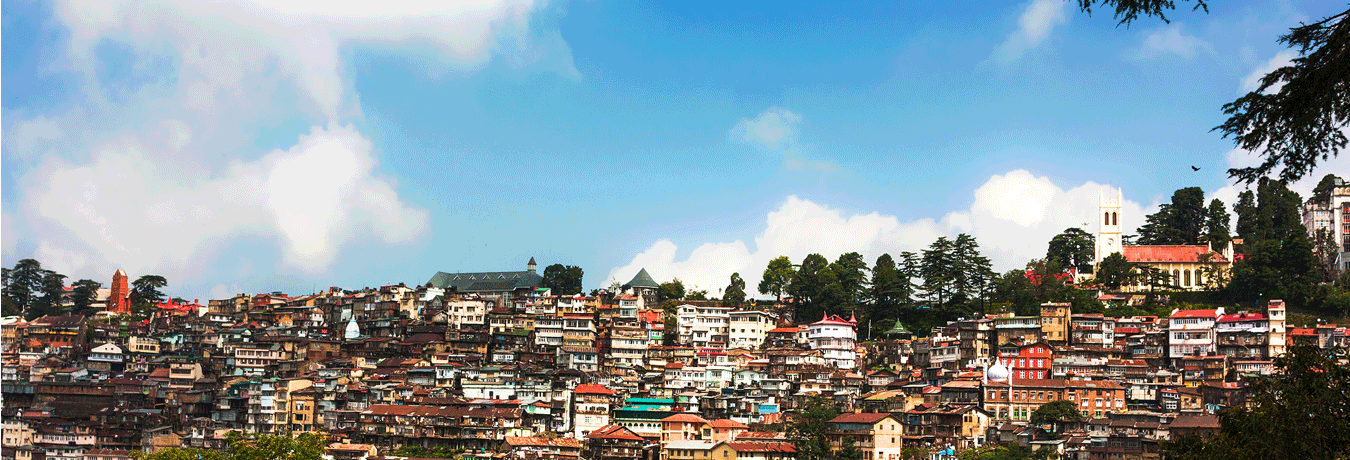
Flanked by forested hillsides from all directions, it would be apt to say that Shimla is the official summer holiday destination of India. It is the capital city of the Indian state of Himachal Pradesh, located in northern India. Shimla was declared as the summer capital of British India in 1864. After India gained independence, this city became the capital of Punjab, another northern state of India and was later named the capital of Himachal Pradesh. Due to the surge in the arrival of tourists in the summer season, Shimla becomes a hub of many activities – especially during the month of June. Himachal Pradesh Tourism Development Corporation also organises some special events during this month to make it a memorable experience for the tourists. So, let’s talk about the main attractions of Shimla and why you should visit this beautiful hill station during the month of June.
Shimla Summer Festival
It is the most important festival of this hill-station, which is celebrated in the first week of June. It is celebrated to welcome the summer season each year. This festival showcases the rich cultural heritage and history of Himachal Pradesh. The Shimla Administration Officials have been organizing this event since 1960 and each year they add new attractions to it. This festival is organized at the Ridge of Shimla. To cater to people of all age groups, many fun-filled activities are also conducted such as musical performances, family games, live theatre, recitals, fashion shows, talent competitions, magic displays, and cultural programs.

Weather
Situated at an altitude of 2,202 meters, Shimla has the subtropical highland climate. While the winter season brings the extremely cold climate in Shimla, it turns into a pleasant weather during the month of June, when the temperature remains between 15°C to 30°C. But, you might have to put on light woolens in the evenings.
Board the Shimla-Kalka Toy Train
Shimla-Kalka Toy Train is a UNESCO World Heritage site and it was built by the British in 1903 to get an easy access to their summer capital Shimla. This train runs for 60 miles through 20 railway stations, 103 tunnels and 864 bridges – the longest tunnel is located near the main railway station at Barog and it is 1.2 km long. Three toy train services run on this track that are named as the Himalayan Queen, the Shivalik Deluxe Express and the Rail Motor Car. It is one of the most scenic train journeys in India, which is endowed with some scintillating views.
Visit Lakkar Bazaar
The famous Lakkar Bazaar of Shimla is located on the eastern side of the Ridge road. Here you can buy the best in local wooden handicrafts. Some of the most popular products which are sold here are wooden toys, trays, pen stands and key rings among others. Hikers also flock to this market to buy wooden walking sticks, which are used for climbing the hilly areas.

Visit Woodville Palace Hotel
Located at a height of around 7000 feet above the sea level, the Woodville Palace Hotel is originally known as the Jubbal Palace. This palace was the residence of the royal family of Jubbal until the year 1977. Spread over 170,000 square feet of land, this palace is complemented by majestic deodar and pine forests. Besides its location, another interesting aspect of this palace is its Indo-Chinese architecture. One can also enjoy a drink or two here at the 1930’s themed Hollywood Bar that has a wall decorated with the signed photographs of the yesteryear Hollywood film stars like Greta Garbo, Spencer Tracy, Clark Gable, Laurel and Hardy, and Katherine Hepburn.
Enjoy Street Food of Shimla
There is a lot of variety of street food in Shimla, as many local shops and stalls serve some mouth-watering local delicacies. One of the most prominent shops is the Bhihari Lal Sharma Stall, which is situated at the Takka Bench above The Ridge. Bhihari Lal was the first fruit chaat seller in the city and he started his shop in 1948. One can enjoy yummy and healthy fruit chaats, served with spicy chutneys. The Verma Tea Stall and Kewal Ka Dhabba, located at Chawda Maidan, serve the delicious butter bun with tea. The Sita Ram and Sons dhaba, located at the Lakkar Bazaar is famous for serving the best channa bhatura in Shimla.

Sightseeing Spots
The prismatic hills of Shimla attract many tourists every year. From adventure enthusiasts to common travellers, there is something for everyone in Shimla. Some of the places, which are worth exploring in Shimla are: Arki Fort, Cultural Complex, Observatory Hill, Gaiety Heritage, Viceregal Lodge and Himachal State Museum. On the other hand, some popular tourist places in Shimla are: The Ridge, Jakhu Temple, Christ Church and Hadimba Temple.
Scenic Spots Around Shimla
Mashobra
This place is one of the only two presidential retreats in India, the other one is in Secunderabad. In fact, Mashobra is that hotel, where Lord Mountbatten and Lady Edwina spent some of their last days in India and they were often visited by Jawahar Lal Nehru, India’s first Prime Minister. This majestic building is surrounded by forests of pine, oak, and cedar trees, which are a part of the Shimla Reserve Forest Sanctuary. Savour the stunning views of the snow-capped mountains from here and further explore the trekking trails and wildlife of this place.
The Hattu Peak Temple
The Hattu Peak temple is located around 65 km from Shimla. This place is known for offering some breathtaking views of the Himalayan Valley. Interestingly, to reach this place, you have to cover the last stretch on foot, which makes the whole endeavour more interesting. The Hatu temple is a small building which is complemented by a beautiful pond and fabulous architecture.
How to Reach
By Air: Jubarhati is the nearest airport, about 23 kilometres from the town. There are regular flights going from Jubbarhatti to Chandigarh and Delhi.
By Train: The small railway station in Shimla is just 1 kilometer away from the centre of the town and it is connected to Kalka by a narrow gauge rail track. The famous toy train of Shimla runs between Kalka and Shimla, covering a distance of 96 kilometres in about 7 hours. Kalka station is the nearest rail-head, which is connected to Chandigarh and Delhi by regular trains.
In Rajasthan January to March? Must-Visit Festivals For You
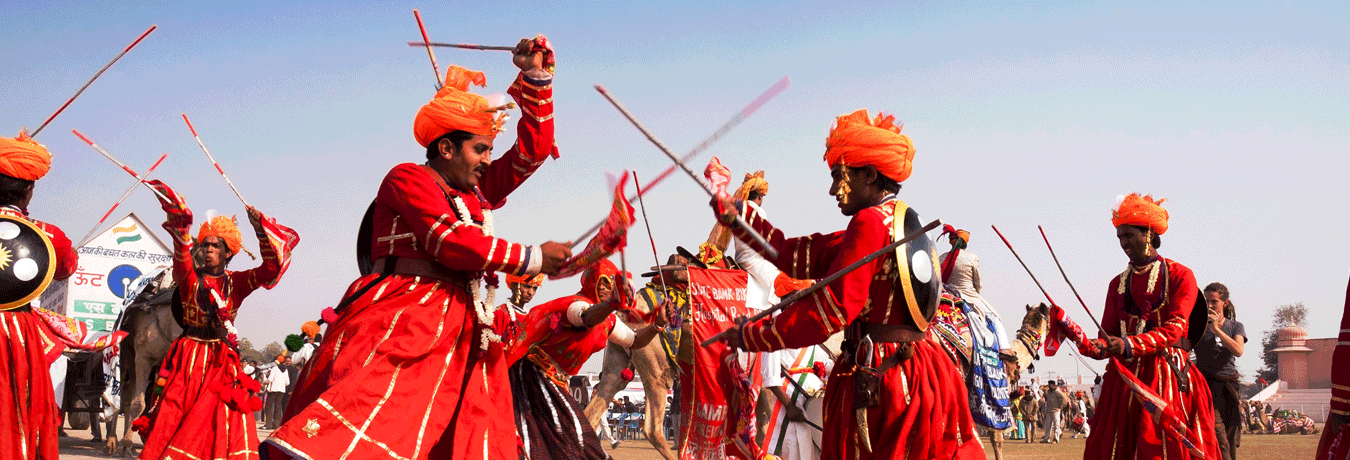
Royalty and glory – these two words sum up the essence of Rajasthan. Though this royal state of India has embraced the modernity to trudge along well with the evolving times, its roots are steeped in grand history, art, culture and architecture. Besides the majestic forts, vast desert and modest people, Rajasthan is also known for its various fairs and festivals, which showcase the colourful and vibrant culture of Rajasthan. There isn’t a better way to enjoy the hospitality and warmth of the people of Rajasthan than by attending their fairs and festivals. Each and every colour of joy and fervour can be experienced during these festivals, which define the very spirit of Rajasthan. If you are planning a trip to Rajasthan, it is better to keep these fairs and festivals in mind, which can make it a memorable experience for you. Let us talk about the festivals, which are organized during the months of January, February and March in Rajasthan.
Kumbhalgarh Festival
Organized by the Department of Rajasthan Tourism, Kumbhalgarh festival is a great initiative to promote the art and culture of the region. This is a must-attend festival if you like to enjoy the live shows of some of the India’s finest classical artists, musicians and dancers performing against the backdrop of the majestic Kumbhalgarh Fort. While adults can enjoy the captivating performances, children can play many games in the vicinity. Other attractions include a turban tying competition and a heritage walk. This festival is named after its creator Maharana Kumbha, who was a connoisseur and promoter of the Indian martial and fine arts, and architecture. This festival also provides a great platform to local artists, who can showcase their talent to a wider audience. This festival is divided into two parts – day time and evening time activities. Folk dances are performed during the day time, while evening belongs to the light and sound shows, which enhance the overall beauty of the fort to a great extent.
When: January 28-30 every year
Where: Kumbhalgarh Fort, near Udaipur
Jaisalmer Desert Festival
The Jaisalmer Desert festival is a well-devised and a fruit bearing effort of the Department of Rajasthan Tourism. This three-day event has emerged as one of the major attractions for the foreign travellers to Rajasthan. In this event, you get the opportunity to understand and experience the various exotic facets of the Rajasthani culture and its people. Encircled by the colossal swathe of golden sand, this festival is organized against the backdrop of the Jaisalmer Fort, which creates a fascinating panorama, oozing with beauty and grandeur. This festival provides a soul-stirring experience to the visitors, as they get familiar with the various interesting facets of the local culture. Besides folk dance performances, other main attractions of this festival are: camel races, puppet shows, polo matches, men with long moustaches, and turban tying competitions among other.
When: 20 -22 February 2016.
Where: Jaisalmer Fort, Jaisalmer
Shekhwati festival
Dotted by the undulating hills of the Aravali mountains range – the Shekhawati province of Rajasthan holds a great value in the history and culture of Rajasthan. This is the reason why it is also called the world’s largest open air art gallery. Located about 125 kms from Jaipur, Shekhawti region is hugely famous for the annual Shekhawati Festival, which is considered as one of the most important events in Rajasthan for promoting rural tourism. This mega event is jointly organized by the Rajasthan Tourism and the Morarka Foundation. In fact, other district administrations of Sikar, Jhunjhunu and Churu also help in organizing this event. Some of the main attractions of this festival are: exhibitions of arts and crafts, cattle fair and cultural performances among others.
When: January 12-14 February 2016
Where: Nawalgarh, Shekhwati
World Sufi Spirit Festival Jodhpur
Sufism is based on the philosophy of personal enlightenment and salvation. This message is eulogized through various forms of expressions including, the mystical poetry, music and dance, which transcend beyond the boundaries of religion and rituals. The World Sufi Spirit Festival Jodhpur brings together renowned artists from India and the world to create three days of magic, full of music and poetry. These artists perform on a stage, which is erected inside the incredible Mehrangarh fort to make it a truly memorable experience for you.
When: 26-28 February 2016.
Where: Mehrangarh Fort, Jodhpur
World Living Heritage Festival
The World Living Heritage Festival is organised by the Maharana of Mewar Charitable Foundation (MMCF), Udaipur in association with UNESCO India Office, New Delhi. This festival is part of the initiatives taken to preserve the incredible heritage of erstwhile Mewar. A comprehensive plan is developed to fulfil this responsibility by ensuring the proper maintenance and care of all the heritage buildings in Udaipur and also by promoting the local culture through different platforms. This festival showcases the best of Mewar heritage and culture to the world in order to create interest and curiosity among the visitors. The main attractions of this festival are: heritage exhibition, music concert, conference, and workshops.
When: 19-23 March, 2016
Where: The City Palace, Udaipur
Jaipur Elephant Festival
Elephants have been remained an important part of the Indian royalty because of their value in religious events, marriage ceremonies, and processions. During olden days, these massive animals were an important part of the royal armoury in a battlefield. This festival pays homage to elephants and it is organised on the full moon day of the Phalgun Purnima, a day before holi, the Indian festival of colour, which is celebrated all over India. A majestic spectacle is created in this festival. Elephants are nicely clothed and adorned with velvets rugs, parasols and jewellery including anklets and bells. One can see all sorts of intricate and traditional Indian motifs on the bodies of these elephants. The festival kicks off with an amazing procession of the elephants, which are painted with different colours and adorned with ornaments and embroidered clothes. The main attraction of this festival is Elephant polo and the tug-of-war between the elephants. Notable musicians and dancers also perform in this event.
When: 22 March, 2016
Where: Jaipur Polo Ground, Jaipur
Godwar Festival
This festival is organised by the District Administration of Pali and the Department of Tourism Rajasthan to promote the culture of the region and to attract tourists. This festival showcases the sparkling traditions and culture of Rajasthan through various dance and music performances. Various notable singers and dancers participate in this festival which is organized for three days in the city of Ranakpur, which is also popular for its rural settlement and remarkable Jain Temples. Other main attractions of this festival are: bullock cart rides, horse race, and turban tying competition among others.
When: 21-22 March, 2016
Where: Mana Hotels, Ranakpur, Rajasthan.
Jodhpur Flamenco and Gypsy Festival
The Jodhpur Flamenco and Gypsy festival is all about celebrating the magic of music and nuance of gypsy culture. Interestingly, the Gypsy culture of India was originated in Rajasthan. It is a three-day event, where world-renowned musicians come together on a single stage to play together in the historically significant Mehrangarh Fort. New and progressive music is played by a diverse group of performers to showcase and celebrate the various aspects of Gypsy tradition. This festival is a must-visit event for those who want to experience the best of progressive music.
When: 18-20 March, 2016
Where: Mehrangarh Fort, Jodhpur
Bikaner: Beyond Castles and Sand Dunes
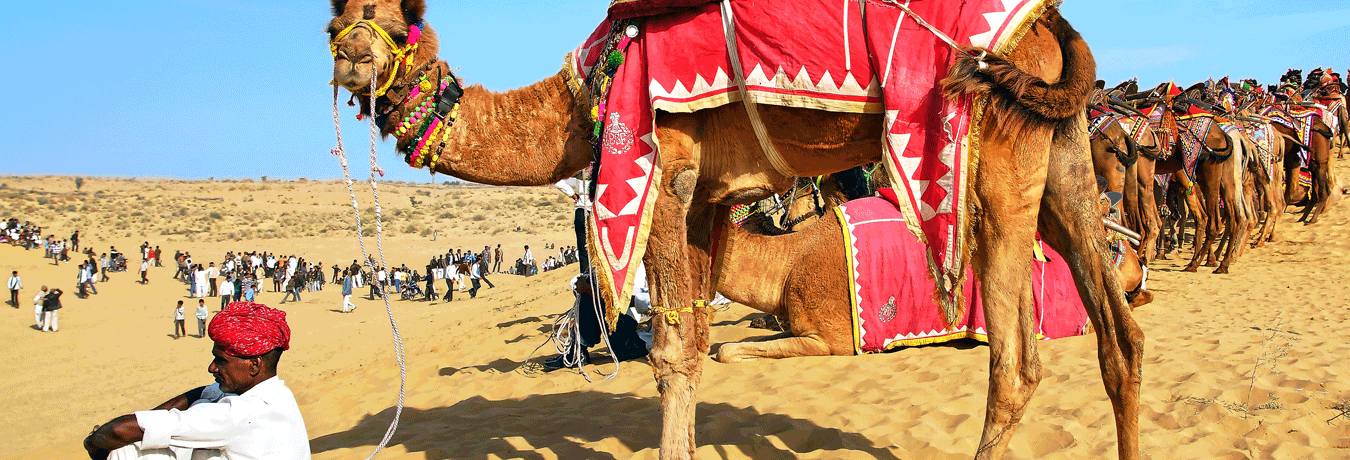
Glory, opulence and royalty – all these synonyms are usually associated with the splendid state of Rajasthan. When we talk about this state from a tourist’s perspective, the most talked about destinations that come to mind are Jaipur, Jodhpur, Ajmer and Jaisalmer. A little bit of insightful research would further reveal that Rajasthan has various other magnificent destinations, which may not be discussed vociferously but has an equal significance like others. One such destination is around 330 kilometers away from the capital city “Jaipur” and known as the town of Bikaner, where you can experience the best of effervescent Rajasthan. The big difference between Bikaner and other popular destinations of Rajasthan is that you would not find big crowds here. This is one of the reasons why Bikaner is hugely popular as one of the most exquisite destinations in India. Tourists do not find many touts and chaos here, which enable them to enjoy the best of Rajasthan without any bitter experience.
Though, Bikaner is not promoted much as other popular destinations of Rajasthan, this city has a rich cultural heritage and a lot of attractions. Bikaner city was established by a Rajput prince, Rao Bika Ji in the year 1488. Also known as the land of the great warriors, a few excavations in this city have unearthed some significant artefacts and relics, which prove that Bikaner had a far superior civilization before the rise of the Harappan civilization. Bikaner is like a display case containing some of the very best of the Rajput civilization with an exquisite range of grand palaces, forts and mesmerizing temples. Let us talk about the major attractions of Bikaner.
Junagarh Fort
Junagarh Fort is also known as “Old Fort” which was constructed by the Raja Rai Singh in 1593. This massive fort is not built on a hilltop, unlike a few main forts in Rajasthan. It is located in the Thar Desert region and complemented by the picturesque courtyards. The captivating design of this fort is a perfect blend of the Mughal, Rajput and Gujarati style of architecture. The main attractions inside this grand building are Dungar Mahal, Anup Mahal, Ganga Mahal, Chandra Mahal, Hawa Mahal and Diwan-e-khas.
Lalgarh Palace
This resplendent building was built in 1902 by the Maharaja Sanga Singh in the memory of his father the Maharaja Lal Singh Ji. It was designed by the notable European architect, Sir Swinton Jacob. Thus, the overall architecture of this palace presents a superb blend of the Rajput and Victorian art influences. Now, this property has been converted into an awe-inspiring heritage hotel known as the Luxmi Niwas Palace. There is a stupendous lawn inside the palace, which is home to many peacocks. One can also visit the massive library, billiards room and cards room, located inside this castle.
Gajner Palace
Majestically located on the banks of a lake, Gajner Palace is also constructed by the Maharaja Sanga Singh. Actually, this building was used as a retreat during the hunting expeditions of the Royal Family. It is constructed by using the red sandstone, which look stunning against the backdrop of a thick forest, which is a temporary home to many migratory birds. The serenity and beauty of this palace make it one of the most favoured tourist destinations in Bikaner.
Temples
Besides its palaces, Bikaner is hugely popular for temples. The most popular one is the Karni Mata Temple of Deshnokh, which is located around 26 km away from the main city. This is the only temple in the world, where rats are considered pious and worshipped. It is believed that around 20,000 rats live in the temple complex and can be spotted everywhere inside the premises. Devotees feed these rats with sweets and milk to seek the blessings of the Karni Goddess. Another popular temple is old Shivbari temple, which has a massive four-faced marble statue of the Lord Shiva. There are two big water reservoirs in the vicinity of the temple, which were once vital to the local community. There are a few Jain temples in Bikaner, which were built in the 15th century. The main Jain temple is Bhandasar Temple, which was built by the legendary Jain merchant Bhanda Shah in dedication to the Lord Parsvanath. It is believed that the foundation of this temple contains around 40,000 kilograms of Desi Ghee or clarified butter. This temple is a three-storey building, which has many Yellowstone carvings and paintings of the bygone era.
International Camel Festival
The International Camel Festival of Bikaner is one of the most sought after and talked about events in Rajasthan. This event is organised by the Department of Tourism of Rajasthan. It is a yearly event, which is celebrated in January to glorify the camels. Many spectacular events are organised at this festival, including camel races, camel safari rides and camel dances. It is a two day fair, which is organized against the enthralling backdrop of the Junagarh fort. Camels are adorned with bridles, heavy anklets and vibrant necklaces during this festival.
International Camel Fair Bikaner 2016 Dates
In 2016, the festivities will start on 22nd January and conclude on 24th January.
Gajner Wildlife Sanctuary
One of the highlights of the Gajner Wildlife Sanctuary is its scenic beauty. It houses a diverse range of flaura and fauna. Some of the wildlife attractions of this sanctuary are: wild boars, blue bulls, Indian hares, deer and antelopes among others. This place is also a home to many migratory birds.
Varanasi: Finding God in Chaos
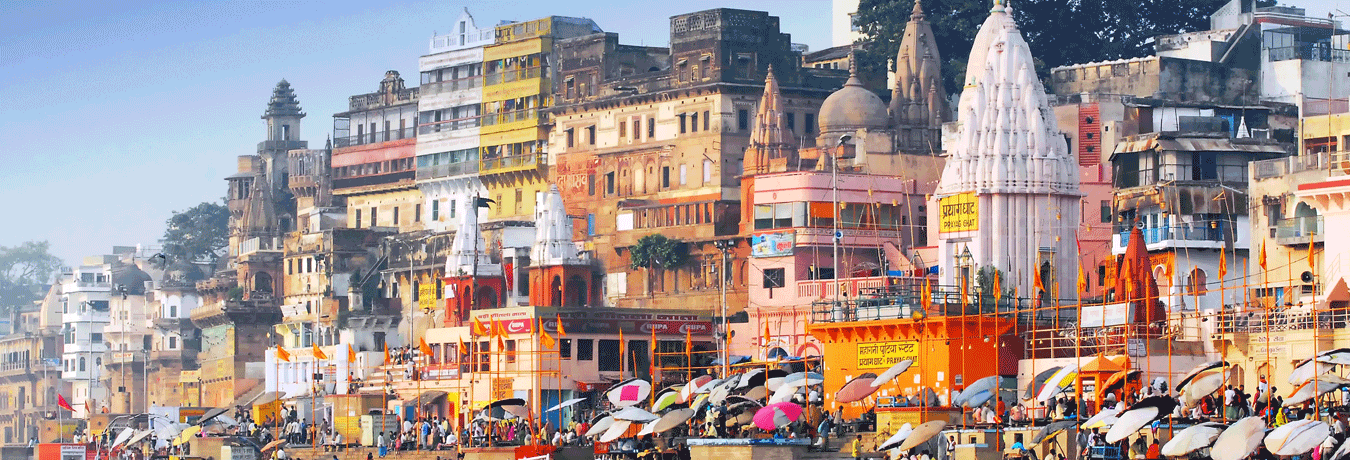
Situated on the banks of the Ganges, the spiritual city of Varanasi is also known as Kashi, which means the “City of Life” according to the Hindu mythology. This colourful and chaotic city is one of the major religious centres for the Hindus and one of the most visited pilgrim’s destinations in India. There are numerous temples, ashrams, ghats and other religious centres spread across the city, which attract tourists from the far and wide corners of the world. Pilgrims line up on the ghats of the River Ganges every morning to wash away all their sins! It is believed that by taking a dip in the holy water of Ganges, one can achieve salvation or moksha. People perform some intimate rituals and rites on the ghats of Varanasi each day, which create some overwhelming scenes for the onlookers. This holy land is also considered as the culmination point of the Indian civilization and religious philosophy. In fact, Varanasi has been home to many eminent poets, writers and philosophers, who have a great influence on the culture and art of this city. Currently, Varanasi is a parliamentary constituency of India’s Prime Minister Narendra Modi. Various development projects have been initiated in Varanasi these days to promote it as one of the cleanest cities in India. There are many things, which earn a unique status for Varanasi. Let us talk about some of the major attractions of Varanasi:
The Ganges River
Varanasi as a city could flourish during the troubled medieval times because of its proximity to the holy river of Ganges. This city has been always remained the epicentre of various cultural and spiritual activities in India. The Ganges is considered as the most important and pious river in India. Millions of people visit Varanasi every year to take a dip in the holy waters of Ganges. There is a lot of faith and cultural significance attached to this river. One can enjoy some stunning views of the river during the sunrise and sunset every day. Many people light candles on its ghats and offer flowers to pay their homage to this great river every day.
Dashashwmedh Ghat
This ghat is regarded as one of the most sacred and popular Ghats of Kashi. The entire ghat looks stunning during the Ganga Aarti ceremony, which draws many tourists towards the river every day. Worshippers and tourists fill up every corner of this ghat to participate in the Aarti ceremony, which is attended by the many priests and sadhus. This spectacular event can be enjoyed from a boat in the river.
Sarnath
Though Varanasi is primarily considered as a hub of the spiritual activities for Hindus, Sarnath which is a prominent site for Buddhists, is situated only 10 km away from this holy city. It is believed that the Lord Buddha delivered his first sermon here in Sarnath, after attaining the enlightenment. Emperor Ashoka had erected a stupa at Sarnath around 234 BC to commemorate that event which changed the course of Buddhism across the sub-continent. In fact, Sarnath also has the tallest statue of Buddha in India, which makes it one of the major attractions for tourists.
New Vishwanath Temple
This majestic temple is situated near the Banaras Hindu University (BHU) and constructed by the Birla family, hence it is known as the Birla Temple. Actually, it is a big temple complex, which has seven temples in it with the statues of popular Indian deities: Shiva, Durga and Lakshmi among others. The remarkable architecture of this temple has been inspired by the Old Vishwanath Temple. The entire structure is made of white marbles, while the inside walls are adorned with the holy text of Gita, the sacred scripture book of Hindus.
Manikarnika Ghat
This is another popular Ghat in Varanasi, which is a place of cremation for the Hindus. One can witness the various rituals and rites in progress, which are related to the popular Hindu beliefs. This place is not for the faint-hearted, as you can witness various unique activities in the form of rituals, which are performed over the dead bodies during the cremation.
Ramnagar Fort
The Ramnagar Fort was once the residence of the former King of Varanasi. This massive fort was constructed in the year 1750 AD by using red stones and it highlights the architectural excellence of those times. Many consider this fort as an astronomical wonder, as there is a big clock in the palace, which was built precisely to show day, week, month and various astronomical details of space objects. There is a museum in the palace, which has a tremendous collection of antique swords, costumes, and palanquins.
Other Attractions
There are hundreds of temples across the Varanasi city. All these temples have historical and religious significance and some of them are as old as 500 years. Though, Sankat Mochan and Kashi Vishwanath temples are the most popular ones, there are many other religious places which belong to various Sadhus or Hindu monks. Varanasi City also has many yoga centres, where one can learn the age-old practises of Yoga under the guidance of experts. There are many hues of Varanasi and one has to spend at least a week in this city to explore some of them.
Jaipur: The Mesmerizing Pink City

For many tourists, Jaipur is another important city to visit in India because it is a part of the world-renowned golden triangle tour, which also includes Delhi and Agra – two other prominent destinations in it. Whether it is the magnificent architecture, majestic palaces or handicraft, there is so much about this so-called Pink City, which is worth exploring. Not many people know that Jaipur was part of the first urban grid created by the 18th-century rulers of Rajasthan. It is also the gateway to the legendary desert of Rajasthan – a land swathed in the tales of pride and honor related to the rich history and tradition of this region. It is another North Indian city, but Jaipur has so many specialities, which set it apart and make it one of the most adored tourist destinations in India. Let us explore them:
Grand Forts
The glory and grandeur of the Rajputs are on display in the form of these forts, which are in and around this beautiful city and gives it that unparalleled imperial look. These forts also give an overview of the war-torn history of North India during those troubled medieval times. The most popular forts are Jaigarh Fort, Amber Fort, and Nahargarh Fort. All these massive structures are complemented by an incredible set of fortifications, which are fine examples of engineering and art of those times.
Awe-inspiring palaces of Jaipur
The beautifully built palaces of Jaipur present a perfect blend of the Mughal, Rajputana and European architectural styles. The enormity and opulence of these palaces are certainly a treat to the eyes. One can relive the glory of those days by visiting these frescoed palaces and further explore the grand heritage and history of Rajasthan. Now, some of these palaces have been turned into hotels for tourists i.e. Jai Mahal Palace, Rambagh Palace, Samode Palace, The Raj Palace, Raj Mahal Palace, and Narain Niwas Palace among others.
Pink City
Interestingly, it was the first planned Indian city. In fact, it is a part of the old city in Jaipur, which is called the Pink City. It is a string of magnificent palaces, built superbly to complement each other. Founded by Sawai Jai Singh II, this entire city was painted in the pink colour to offer a grand welcome to the Prince of Wales in 1876. The most outstanding thing about its construction is that it has been built in such a precise manner to ensure excellent ventilation in each part.
Crafts
Over the decades, Jaipur has been remained the main centre of gem cutting and polishing in North India. The Old City has a Johari Bazaar, which is a hub of connoisseurs of glittering rocks. If expensive gems are not your kind of thing, then take a walk through the industrial suburb of Sanganer, where you can check out various stores selling the local Anokhi clothes. There is a Museum of Hand Printing nearby, which offers a wonderful range of handcrafted fabrics.
Festivals
Jaipur is known for its colourful festivals. Each year, Jaipur city hosts popular festivals like Kite festival, Gangaur festival and Teej festival. In recent years, Jaipur has also earned worldwide fame for its Literature Festival, which is attended by many notable authors every year.
Rann of Kutch: The Mystic Desert

It does not fall into the category of typical tourist trails because this destination is not only different from others but also a part of the hottest region of India. Now the obvious question is that can a part of a desert attract tourists? Well, the first images that usually come in mind, when someone thinks about Rann of Kutch are of the majestic White Salt Desert and shimmering glimpses of a mirage. Nevertheless, there is more to the largest district of India than that, and one has to explore this barren but beautiful land to savor its many charms and attractions – from intricate art, fabulous carvings, and birds, to the ethereal natural beauty. Rann of Kutch is divided into two regions: The Great Rann of Kutch and The Little Rann of Kutch. The main attraction of the Great Rann of Kutch is its seasonal salt marsh that covers around 7000 sq kms of land. The Little Rann of Kutch is a salt marsh land only also a home to the endangered Indian Wild Ass. Let us look at the attractions of this desert and other important things, which set it apart as a tourist destination:
Kalo Dungar
In Gujarati, Kalo Dungar means the black hill and it is also the highest point in the district. Well, this hill provides a great panoramic view of the entire Rann of Kutch and nearby Indo-Pakistan border. Besides savouring the majestic glimpses of this desert, one can also visit the ancient temple of Dattatreya, which is built near the Kalo Dungar. This grand temple is dedicated to Dattatreya, who is considered as the third incarnation of the Lord Buddha.
Kutch Desert Wildlife Sanctuary
However, it is a part of a barren land, there is a wild sanctuary here, which is known as the Kutch Desert Wildlife Sanctuary – famous for its massive breeding colonies of the flamingos and as a last refuse of the endangered Asiatic wild ass. Spread across an area of 4,950 sq km, this saline land is also a home to a considerable population of jackals, nilgai, and snakes. In fact, many exotic varieties of birds also reside in this sanctuary and attract many tourists, especially during winters, when the temperature stays comfortable.
Nirona Village
The most outstanding thing about this village is that it is the only place in India, where you can find the most consummate artists of the Rogana Art. The entire village is like an exhibition of art, as you can behold some great illustrations of Rogan Paintings on the walls and metals. In fact, there are many artists in this village, who are known for their awe-inspiring metal and lacquer works. This place is a heaven for anyone searching for exotic handicrafts.
Mandvi Beach
The pristine Mandavi beach is the place to be if someone is seeking tranquillity. Besides enjoying the enthralling view of this place, one can also indulge in bird watching. The Vijay Vilas Palace is not far away from here. Take a camel ride to the palace amidst rotating windmills, which further augment the overall beauty of Mandavi Beach.
Bhuj
The Bhuj city is a part of the district of Kutch. This city is known for its ancient temples and architecture. Here, you can find the artists of the notable bandhni or tie-dye work. Besides that, it is a culmination destination to explore the culture, food, and art of Gujarat.
Rann Utsav
The Rann Utsav is an annual three-month-long festival, which is organised by the Government of Gujarat. This festival is all about the celebration of life through various cultural activities and festivities of Gujarat. One can savour the stunning views of various colours, sprinkled on a desert in a mesmerizing manner. The Rann Utsav gives you an opportunity to enjoy the flavours of Gujarat and hospitality of Kucchi People. This festival also works as a platform to keep the old arts alive and to revive various traditions, which are associated with this region.
When: 18th November, 2015 to 29th February, 2016.
The best time to visit Rann of Kutch is October to March every year.
How to reach:
The nearest airport is Bhuj, which is 50kms away. Ahmedabad International airport is 93kms away.
The nearest railway station is Wankener, which is 65kms from Rann of Kutch. Other nearest railway stations are Gandhidham and Bhuj.
Jaisalmer: The Golden Oasis of Rajasthan
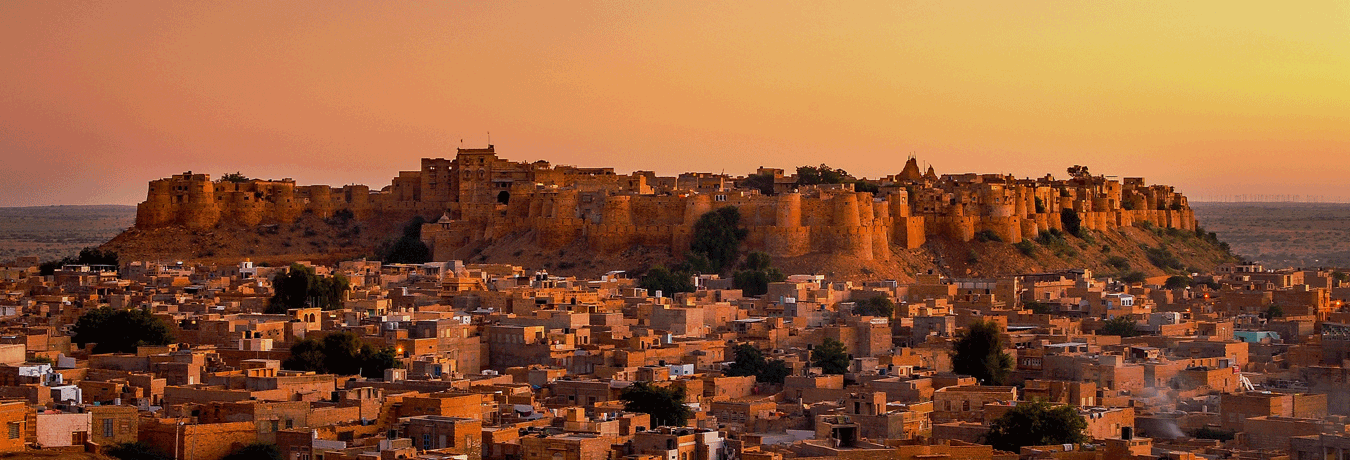
Inducing a mesmerizing picture of an ambience taken straight from the pages of Arabian Nights’ fables, the Jaisalmer city of Rajasthan is situated right amidst the scenic Thar Desert, and also known as the Golden City. It is one of the most preferred tourist destinations in India and ranked as one of the major attractions of Rajasthan
which attract thousands of tourists towards it every year. The scenery of Jaisalmer appears surreal to the first time visitors, as they find it difficult to fathom that a vast kingdom could thrive in this barren desert. One can not only trace the imprints of the Royal Rajasthan in Jaisalmer by visiting the fort and other architectural landmarks in the area, but can also cherish the beautiful memories of the moments spent with locals, known for their hospitality and warmth. Overall, Rajasthan is known for its grand heritage and you would find it in abundance in Jaisalmer, but here, you would explore a different facet of it. There are many historical attractions scattered all over the Jaisalmer city and one needs to spend a few quality days exploring them all. A perfect amalgamation of antique and medieval era architecture, there is a lot in Jaislamer to catch your imagination. So, let us find out what are those attractions:
The Jaisalmer Fort:
Perched right on the top of a small hill to offer a mesmerizing view, this five-storied fort overlooks the entire area and carries the prints of Royal era architecture. The legendary filmmaker and writer Satyajit Ray described the splendour and architecture of this fort in his novel, which was later turned into a film. This imposing fort was built in the 12th century by the Rajput ruler Rao Jaisal to keep a check on the foreign invaders. The fort is built by using the yellow sandstone, which gives it that enticing golden look during sunset and contributed in earning the title for it as “Sonar Quila” or “The Golden Fort.” This fort is encircled by a 30 foot high wall, which has 99 bastions and some intricately carved gateways. The construction and beauty of this fort have all the requisites to leave you awestruck. One can savour the panoramic view of the entire Jaisalmer city from its two vantage points, which were used as canon points.
The Gadisar Lake:
Once a water reservoir for the entire state of Rajasthan, the Gadisar Lake has now become an illustrious tourist destination in Jaisalmer. Surrounded by temples and a majestic landscape, the Gadisar Lake is the iconic symbol of prosperity and peace in the region. This lake is located just a kilometre away from the fort and constructed by the Raja Rawal Jaiswal and then reconstructed by Maharwal Garsi in 1367 AD. This lake provides food to many migratory birds. Besides being a haven for birdwatchers, this place is also a pilgrimage spot for many because of the number of temples in the surrounding area. It also offers a stunning view of the Jaisalmer Fort. Little island structures and minarets on the lake add grandeur to the beauty of the entire landscape. One can enjoy the ultimate serenity amidst this calm setting and take a boat ride to savour the beauty of this place.
The Salim Singh ki Haveli:
The most unique thing about the Salim Sing Ki Haveli is that its architecture and sculpture are a bit different than any other Haveli of that era. One of the highlights of this Haveli is its roof, which has been exquisitely created with a outline that resembles a peacock. The grand gate of this Haveli is adorned by the Tuskers, built by using the sandstones. There are 38 balconies in the Haveli and each balcony is different from others in terms of artistry. This Haveli was named as Jahaz Mahal because its structure resembles a ship stern.
The Raj Mahal:
The Raj Mahal is characterised by its alluring ambience and cultural eminence. This grand building was built by the Englishmen right inside the majestic Jaisalmer fort, and its design apparently exhibits the lavishness of those days, when Britishers ruled India. It is a seven-storied building, which is finished with lattice work.
The Patwon ki Haveli
The Patwon ki Haveli was the very first Haveli, which was ever built in Jaisalmer. Actually, it is a cluster of five different Havelis and together they create a massive building. This Haveli was also known as the “mansion of brocade merchants” because this building belonged to the Patwa family, which used to be the traders of gold and silver. Now the Haveli is preserved as a heritage building and the Rajasthan government takes care of it.
Best time to visit: From October to the month of March.
How to reach:
The nearest airport is the Jodhpur airport, 285 Km away from Jaisalmer.
Jaisalmer has its own railway station, and it is well connected by a rail network with Jodhpur as well as with other major cities of India including Jaipur, Agra, and New Delhi.
Udaipur: Lakes and Beyond
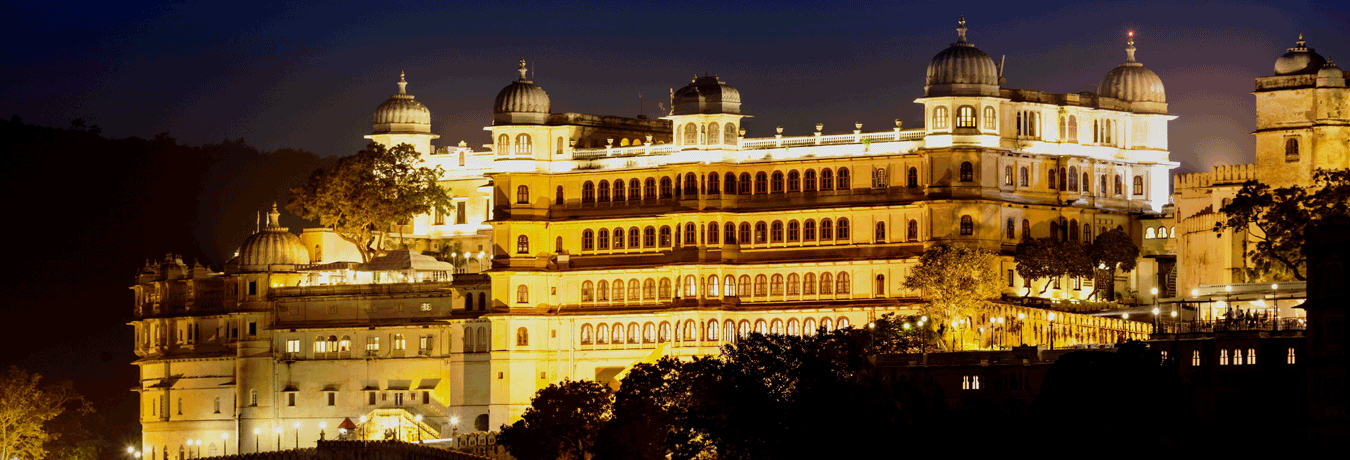
Nestled amidst the sparsely wooded ridges of the Aravalli Hills, Udaipur never fails to enthrall the visitors with its shimmering lakes and imposing palaces. Above all, it has all the requisites to succeed as the most romantic place in India. Awe-inspiring palaces, havelis, temples, colourful streets proffer a perfect blend of rich history, culture and traditions of Rajasthan. Besides the natural settings and lakes, what give the soul to the true beauty of Udaipur are its majestic architectures – which belong to the grand house of Mewars. The Mewar Kings not only preserved and endorsed the refined architecture in the region but also took a great care of its lakes. Due to their sheer love and passion for architecture and natural beauty, Udaipur could retain its inimitable identity and gorgeousness over the centuries. Let us talk about some of the attractions of Udaipur.
City Palace of Udaipur:
This is where you can observe and explore the true grandeur and history of Rajasthan, City Palace is the most sought after tourist destination in Udaipur. The entire palace is created by integrating several stunning buildings and robust towers. Hence, it is also called the Palace Complex. Created and preserved by the royal Mewar family, the brevity and elegance of the architecture leave you spellbound. The major attractions of the entire complex are – the vintage car museum, Daawat-i-Aam, the crystal gallery, Daawat-i-Khas and Maharani Palace. This palace also offers a spectacular view of the Lake Pichola. Another major attraction is the Mewar Light and Sound Show, which is performed every evening here.
Lake Palace of Udaipur:
The most wonderful thing about Lake Palace is that it is built on Lake Pichola, which provides natural beauty and attractive setting to it. It is situated on the Jagniwas Island, which is now maintained and run by the Taj Group of hotels. This is the reason why, it is also known as the Taj Lake Palace. The purple and ochre ridges of the Aravalli Hills in the background create an enticing silhouette to proffer it as the most romantic place in Rajasthan. Besides soaking in the beauty and opulence of this palace, one can take a heritage walk to revisit the glory of the Royal Rajasthan. This palace is also a treasure-trove for the lovers of delicate architecture, which is complimented by fretwork screen, sculpted marbles and gilt mouldings.
Lake Pichola of Udaipur:
It would not be an exaggeration to say that the pristine Lake Pichola contributes a lot in providing a unique identity to Udaipur. It is one of the most beautiful man-made lakes in the world. Almost every visitor takes a boat ride from Rameshwar Ghat in the City Palace to explore the 4km area of Lake Pichola, which also has two small but hugely popular islands named as Jagmandir and Jagniwas. One can enjoy the majestic view of the Lake Palace from the Jagniwas Island.
Jagdish Temple:
The famous Jagdish temple is built by the Maharana Jagat Singh and its structure is based on the culmination of the Indo-Aryan architecture. The deity of Jagganath or Lord Vishnu presides over this grand temple in the form of a black stone idol. This temple is located near the Badi Pol, which is the entry point to the City Palace. There is a brass image of the Lord Vishnu’s mythical vehicle Garuda, placed in front of the statue of the main shrine. Like any other typical Hindu temple, there are many small shrines inside the main temple, which are dedicated to other gods. Each day, a large number of devotees throng the courtyard of the temple to participate in the grand Aarti ceremony at sunrise and sunset.
Bagore Ki Haveli:
The popular Bagore Ki Haveli is situated on the Ganguar Ghat on the Lake Pichola, which offers a magical view of the lake. It is one of the most bustling places in Udaipur, famed for its grand and massive architecture. This Haveli has 100 rooms and each room has been diligently complimented by the finest mirror work. One can re-visit the splendour of the glorious era, which is on display in the form of dice-games, jewelry boxes, hikes, nutcrackers, pan boxes, paintings of Mewar and copper vessels. Various dance and music shows take place in this majestic building.
The Fateh Sagar Lake:
The Fateh Sagar Lake is situated on the northern side of the Lake Pichola and intrinsically connected to it via a canal. There are three islands on the lake, which are considered ideal as a family outing joints. One can enjoy a boat ride on this lake.
Shilpgram or Craftsmen’s village:
The Shilpgram village is a perfect destination for all those looking to explore the culture and craft of Rajasthan. Only 3kms away from the main city of Udaipur, Shilpgram has various government-owned complexes which showcase the intricacies of the rural life of Rajasthan, Gujarat, Maharashtra and Goa. One can buy various handicrafts and traditionally designed items here and also enjoy the camel and horse rides.
The places, which are described above are only some of the attractions of Udaipur. The city has a lot more to surprise anyone.
Why Winter is the Best Time to Visit Delhi
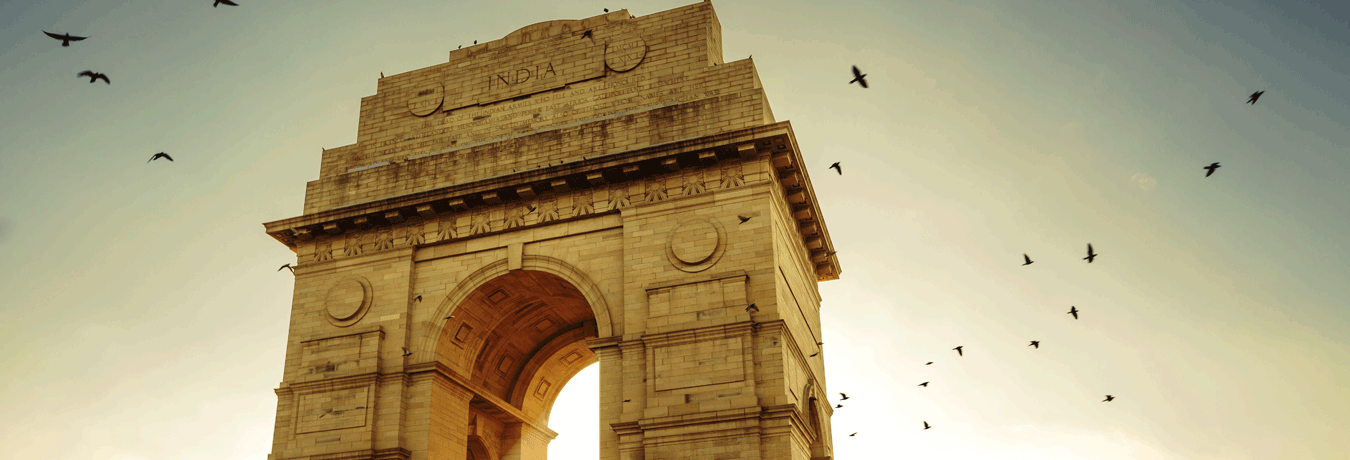
A gradual plunge in the morning temperature invokes the arrival of a serene and chilly evening, which marks the beginning of another winter season in Delhi. Colloquially termed as “Dilli ki Sardi” or ‘the winter of Delhi’, it brings its own charm and multiple festivals that add an air of euphoria and frolic in the atmosphere to spice up your overall experience – a bit more than you can imagine. It is advisable to travel Delhi during the winter season, as comfy weather enables you to enjoy the balmy sun and encourages to go sightseeing. As being the capital of India, Delhi has several magnificent monuments and interesting places, which have their historical and cultural significance. Besides that, there is an extensive range of delicious delicacies, to savour during this season. Undoubtedly, the capital of India turns into one of the most sought after destinations during winter! Why? Let’s unearth some details:
Cosy Weather:
Winters in Delhi are associated with a typical pleasant weather. The obvious reason is that the day temperatures remain cool between 20-30 degrees Celsius. Being a lot close to the hill stations like Shimla, as compared to other metros in India – the effect of a snowfall in Shimla is clearly felt in Delhi. The temperature further drops during the peak winter in the month of January, causing fog for a few days. The month of February experiences a slight rise in temperature as the flowers begin to bloom and the massive gardens and parks of Delhi burst with bright colours, offering an endearing sight to everyone.
Delicacies Delight:
Undoubtedly, Delhi is quite famous for its street food and a hoard of legendary Mughalai dishes, but the capital turns into a heavenly banquet for foodies during winter. Perceptibly, there are certain foods, which are consumed during winters only. Delhi has its winter specialities too, which can be enjoyed by everyone – whether it is everyone’s favourite Masala Chai, Kathi Kebabs, or season’s special desserts like Gajar Halwa and Gajjak, all these amazing delights blend perfectly with those chilly evenings and not only satisfy your taste buds but also provide a much-needed warmth. One can enjoy a lot of mouthwatering street food, exquisite Mughalai dishes and desserts in almost all parts of the capital. Some of the popular places to relish the best of Delhi food are: Khan Market, Old Delhi Market, Nizamuddin, and Connaught Place among others.
Places to explore:
For many tourists, Delhi is simply a transportation hub, an arrival destination. In fact, the capital of India has many historical and cultural centres, which deserve to be explored by an ardent traveller. When it comes to wide-open spaces and greenery, the capital of India is right there on the top as compared to other metros. Delhi also has some of the most magnificent historical monuments in India. While the searing heat of Delhi summers makes it simply impossible to explore these places, winter brings along a great opportunity to enjoy sightseeing. Some of the popular monuments of Delhi are: Qutub Minar, Humayun Tomb, India Gate, Old Fort, and Jama Masjid among others.
Cultural activities:
During winter, Delhi plays host to a rich variety of cultural, musical and art events. One can enjoy music and dance festivals, art gallery exhibitions, lectures and talks. Every year in February, Delhi hosts a hugely popular three-day Sufi music festival, which is held at the lawns of the Humayun’s Tomb, to commemorate the death anniversary of the saint Hazrat Amir Khusrau, who started the qawwali music tradition in the 13th century AD.




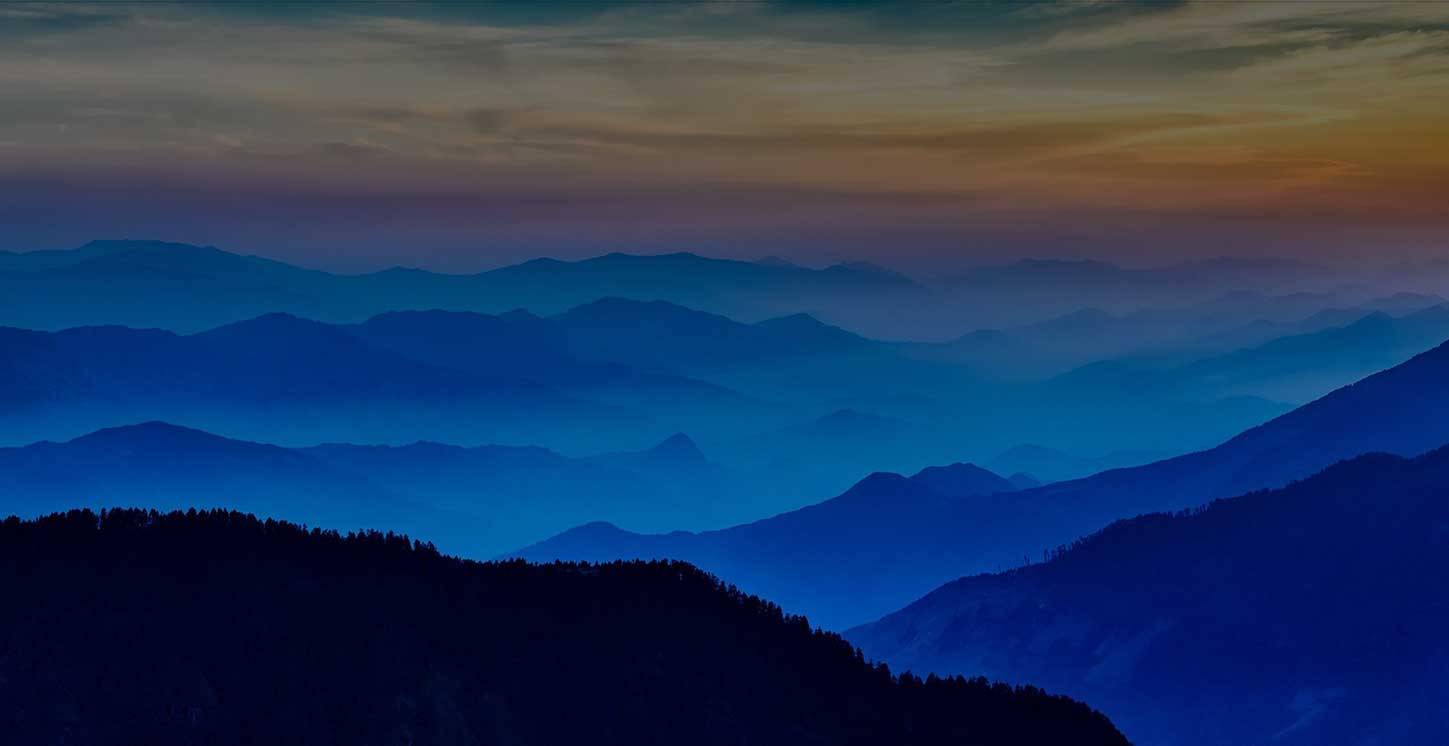
 +1-(765)-586-1210
+1-(765)-586-1210 +44-2030-2689-44
+44-2030-2689-44 +91 124 4361906
+91 124 4361906


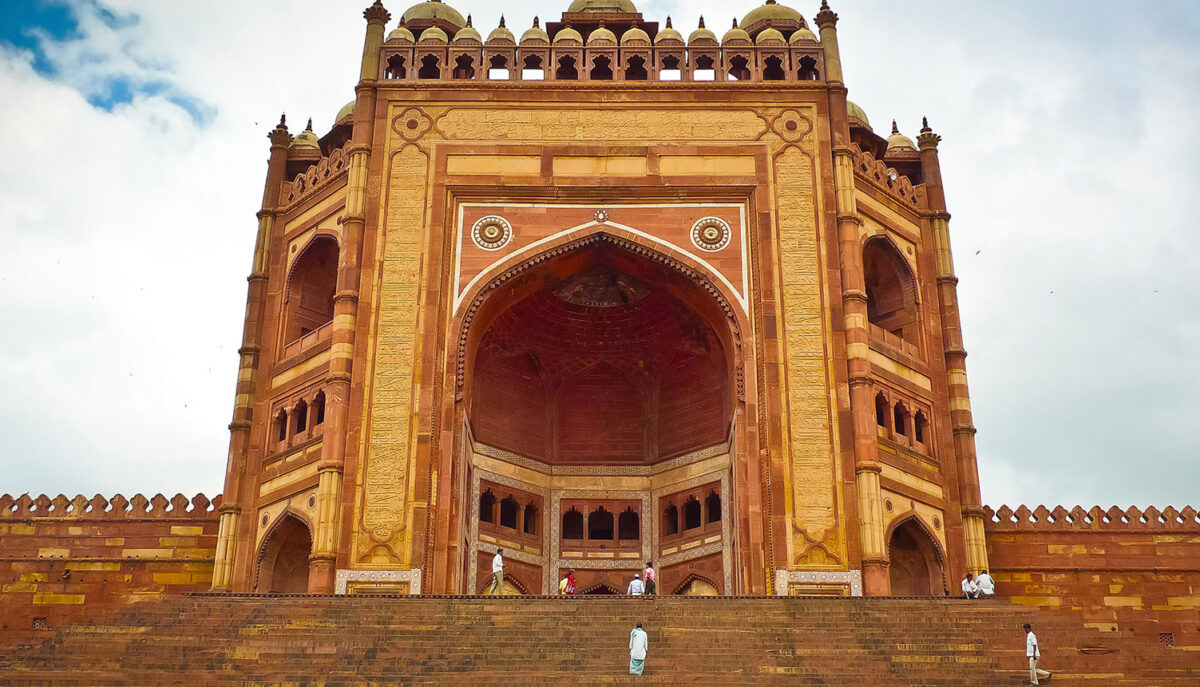
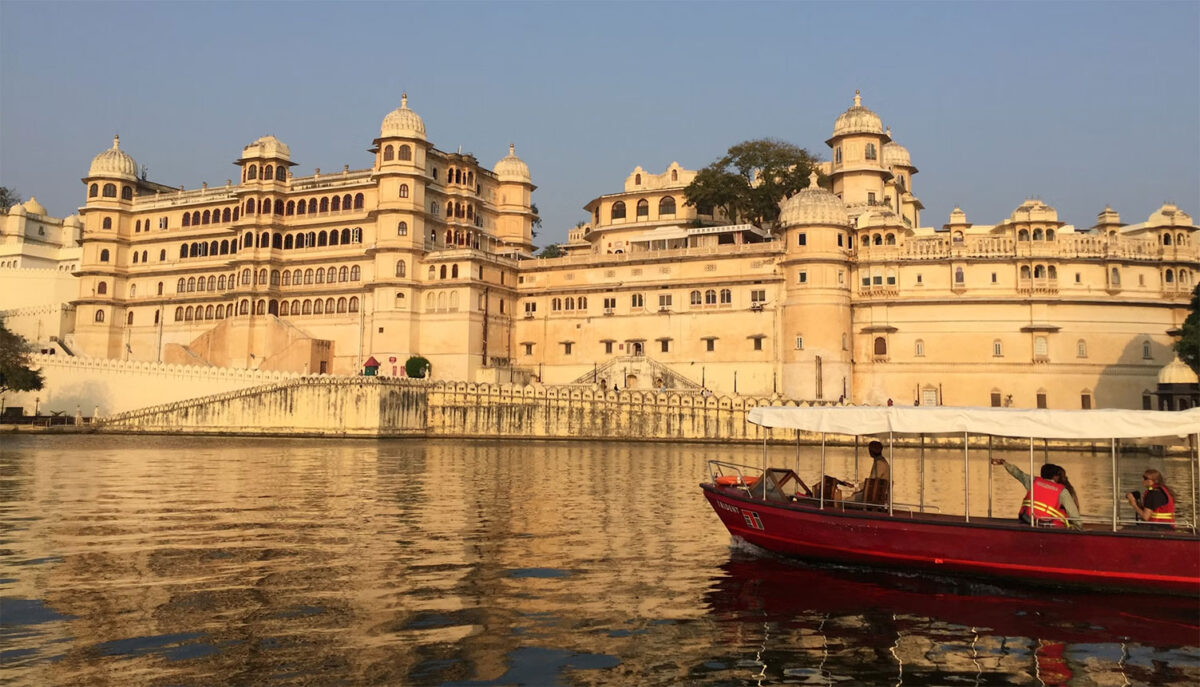

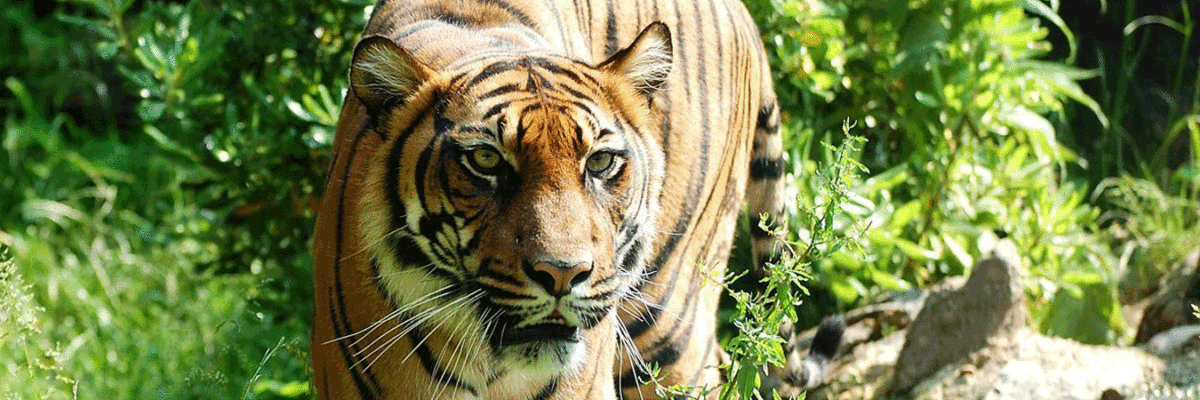
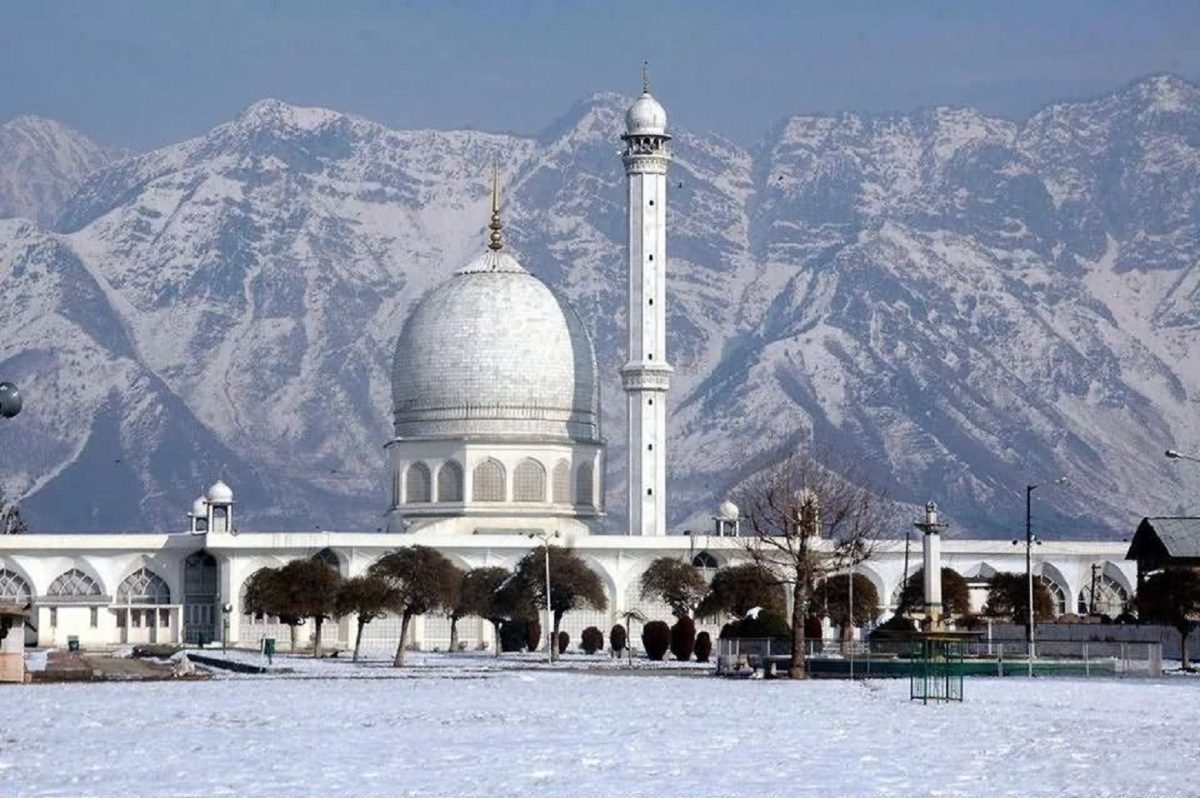
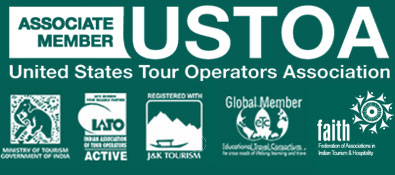

 +1-(765)-586-1210
+1-(765)-586-1210 +44-2030-2689-44
+44-2030-2689-44
